IS THE US READY FOR WAR?
 By Andrew Thornebrooke
By Andrew Thornebrooke

 By Andrew Thornebrooke
By Andrew Thornebrooke
the chinese communist party is gearing up for war.
With the Chinese regime firmly set on seizing Taiwan, the democratic island it claims as its own, it’s been widely questioned whether the United States is militarily ready to respond to such an attack.
The Epoch Times spoke to analysts, lawmakers, and former Pentagon officials, who painted a grim picture.
First, there’s the issue of how the United States can deter Chinese communist aggression in the region, given the threat posed by the regime’s growing nuclear arsenal.
A key concern for experts is the U.S. military’s ability to project its power across 3,000 miles of the Pacific Ocean. Some say the United States would simply be outmanned and outgunned in any conflict in the Indo-Pacific.
Logistics are another challenge. The war in Ukraine has drained the United States’ munitions supplies, raising further concerns about whether defense supply chains can be bolstered in time before a potential Chinese attack on Taiwan.
But other analysts believe the odds are not so weighted against America. Read the cover story to understand what’s at play in a potential conflict with the Chinese regime.

Experts fear that the United States is not doing enough to strengthen its military capabilities in the event of a kinetic conflict with China.
ANDREW CABALLEROREYNOLDS/AFP VIA GETTY IMAGES
JASPER FAKKERT EDITOR-IN-CHIEFCHANNALY PHILIPP
LIFE & TRADITION, TRAVEL EDITOR
CHRISY TRUDEAU MIND & BODY EDITOR
CRYSTAL SHI
HOME, FOOD EDITOR
SHARON KILARSKI
ARTS & CULTURE EDITOR
BILL LINDSEY LUXURY EDITOR
FEI MENG, BIBA KAYEWICH ILLUSTRATORS
SHANSHAN HU PRODUCTION
CONTACT US
THE EPOCH TIMES ASSOCIATION INC. 229 W.28TH ST., FL.7 NEW YORK, NY 10001
SUBSCRIPTIONS
READEPOCHINSIGHT.COM
GENERAL INQUIRIES, LETTERS TO THE EDITOR HELP.THEEPOCHTIMES.COM

ADVERTISING
ADVERTISENOW@EPOCHTIMES.COM
(USPS21-800) IS PUBLISHED WEEKLY BY THE EPOCH MEDIA GROUP, 9550 FLAIR DR. SUITE 411, EL MONTE, CA 91731-2922. PERIODICAL POSTAGE PAID AT EL MONTE, CA, AND ADDITIONAL MAILING OFFICES.
POSTMASTER: SEND ADDRESS CHANGES TO THE EPOCH TIMES, 229 W. 28TH STREET, FLOOR 5, NEW YORK, NY 10001.
Jasper Fakkert Editor-in-chief
22 | Nuclear Power
As U.S. demand rises, the nuclear industry is seeking to shore up uranium supply chains.
44 | Bragg’s Team
A look at Manhattan District Attorney Alvin Bragg’s squad of prosecutors against Trump.
50 | Media Influence
Coverage of the Trump indictment shows how news outlets can shape the public’s view.
56 | Twitter
Elon Musk may have sounded the death knell for statefunded journalism.
57 | Fentanyl Crisis
Mexican drug cartels supplied by China are killing Americans.
58 | Digital Currency
The idea of a digital dollar is gaining support in Washington.
59 | Stakeholder Capitalism
Banks spend billions on climate change and racial equity.
60 | Banking Crisis
Capital destruction in most banks will result in a credit crunch.
14 | War With CCP China is preparing for war, but is the United States ready?
30 |
An Amish farmer is challenging the constitutionality of the federal firearms license.
34 |
An immuniologist says an early treatment that authorities ignored could have saved thousands of lives.
SpaceX’s Starship spacecraft lifts off from the launchpad during a flight test from Starbase in Boca Chica, Texas, on April 20. The test flight ended minutes later with an explosion. The company wrote on Twitter that with the failed test, the firm will learn from its mistakes.

61 | Reserve Currency
Is Washington dozing behind the wheel regarding the U.S. dollar?
62 | ‘I’m Dying’
A former Pussycat Dolls star shares her COVID-19 vaccine injury story.
68 | Spring Cleaning
Spring is a time of refreshing and renewing one’s body and soul.
70 | Beach Life
Seen in the movie “Heat,” this Malibu home is an idyllic getaway.
72 | A Caribbean Delight
Tiny St. Martin has 37 pristine beaches, and all are amazing.
75 | Go Whole Hog
This family-run farm teaches pasture-to-plate butchering skills.
76 | Summer Camps for Grown-ups
Adults can enjoy s’mores with cocktails at these camps while the kids are at theirs.
79 | Write This Down
A selection of writing tools that are ideal for lists or letters.
83 | Welcome Aboard
Crowded, hectic air travel requires its own rules of etiquette.

HIGH-LEVEL
 CLIMBER ALAIN ROBERT, popularly known as the “French Spiderman,” climbs the Alto Tower, in La Defense near Paris on April 19.
PHOTO BY THOMAS SAMSON/AFP VIA GETTY IMAGE
CLIMBER ALAIN ROBERT, popularly known as the “French Spiderman,” climbs the Alto Tower, in La Defense near Paris on April 19.
PHOTO BY THOMAS SAMSON/AFP VIA GETTY IMAGE

The United States is in a race to develop a sustainable uranium supply chain. 22
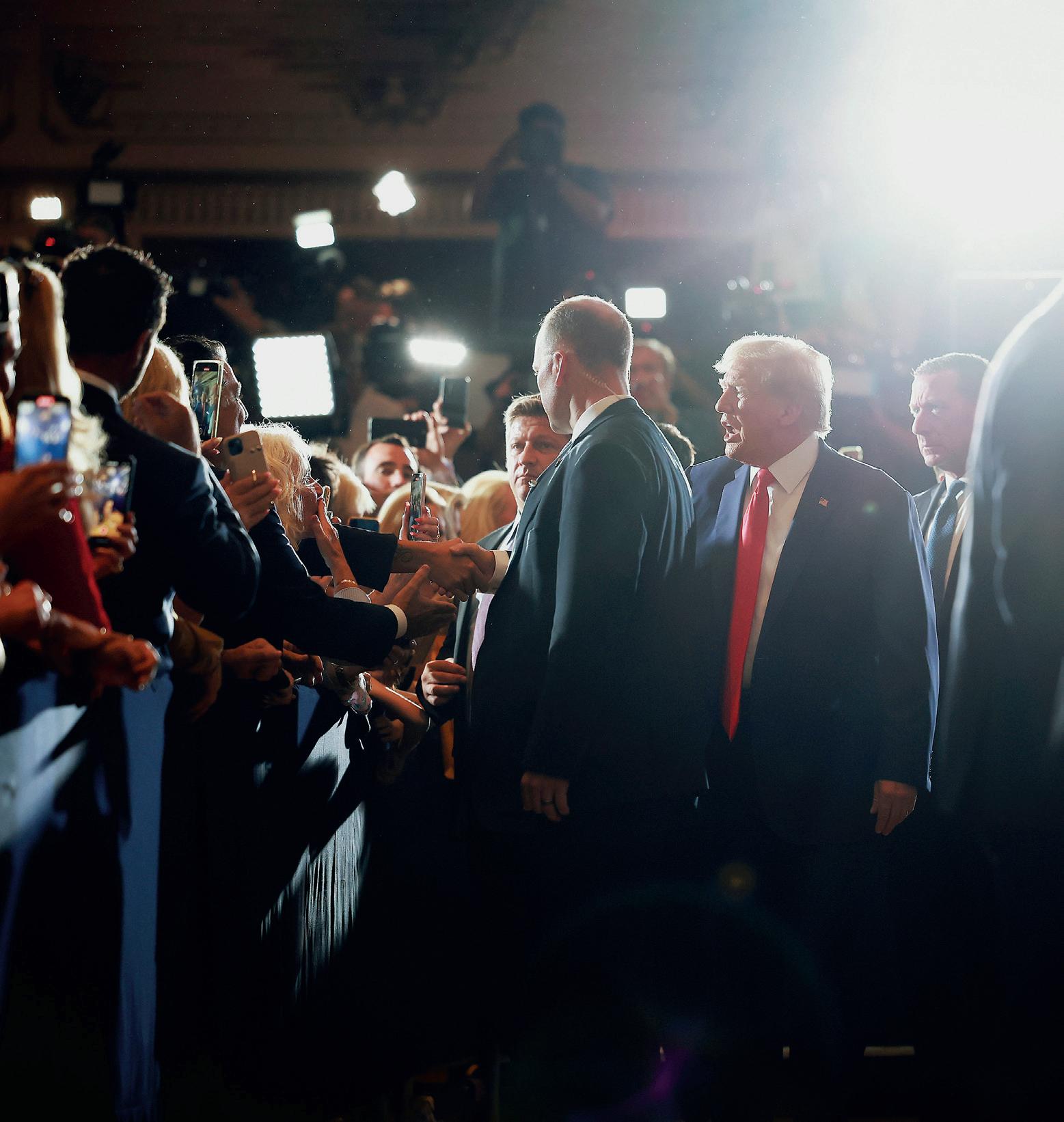
An Amish farmer who had his guns confiscated argues that the federal firearms license is unconstitutional. 30
Authorities shot down widely available drugs that are effective against COVID19, a professor says. 34
69%
of U.S. adults have negative views about the current economic landscape, according to the latest CNBC All-America Economic Survey.
23%

Arrests of illegal immigrants at the U.S.–Mexico border jumped in March by 23 percent from a month earlier, according to U.S. Customs and Border Protection.

The hit musical “The Phantom of the Opera” has ended a record-breaking 35-year Broadway run. Along with staging nearly 14,000 performances since it debuted in New York in 1988, the show has won more than 70 major awards.

200%
The cost of child care has gone up 26 percent in the past decade and more than 200 percent over the past 30 years, according to the White House. Meanwhile, the cost of caring for the elderly and people with disabilities went up 40 percent in the past decade.
$725 MILLION — Facebook’s U.S. users have until August to claim part of a $725 million class-action settlement of a lawsuit that claimed the company’s parent, Meta, violated users’ privacy.
“There’s not some magical cure for getting rid of inflation except to increase the productivity, the output of goods and services.”
“We will not tolerate the [Chinese] government or any foreign government harassing or threatening U.S. persons.”
KarineJean-Pierre, White House press secretary, on the U.S. government’s response to the Chinese communist regime’s assault on individuals in the United States via secret police stations
Elon Musk, CEO, Tesla, in an interview with Fox News
Enforcement (ICE) is considering “virtual” arrests to address a growing backlog of unprocessed illegal immigrants.

ICE Deputy Director Tae Johnson told the House Appropriations Committee that his agency has been overloaded with work because of the unprecedented influx of illegal immigrants along the U.S. border with Mexico over the past two years.
ICE and Border Patrol have been so inundated by illegal immigrants that many have been released without even being issued a “notice to appear,” which constitutes the first step in the legal deportation process.
THE VIRUS THAT CAUSES COVID-19 originated in a Chinese laboratory and was leaked unintentionally, a U.S. Senate report has concluded.
SARS-CoV-2 leaked from the Wuhan Institute of Virology, which tests bat coronaviruses, twice in 2019, researchers who produced the report say.

“The preponderance of information supports the plausibility of an unintentional research-related incident that likely resulted from failures of biosafety containment during SARS-CoV-2 vaccine-related research,” the 301-page report states.
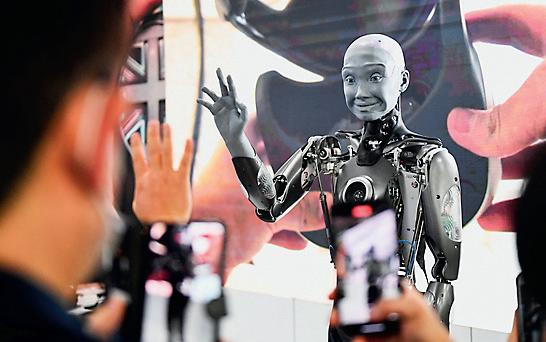
TWO-THIRDS OF
across the United States could be partially automated by artificial intelligence, Goldman Sachs economists warn.
Economists Joseph Briggs and Devesh Kodnani said in a report that a new wave of AI systems, such as ChatGPT, could have a “major impact” on employment markets across the globe, while advances in such technology could trigger shifts in workflows that could “expose the equivalent of 300 million full-time jobs to automation.”
As part of their report, the two economists analyzed databases detailing the type of tasks performed in more than 900 different occupations and estimated that about two-thirds of U.S. occupations are vulnerable to “some degree” of automation by AI.
In addition, they forecast that roughly a quarter to as much as half of the workload in those occupations could be handled by AI.
THE UNITED STATES has for the first time paid people who were injured by COVID-19 vaccines.
Three people received compensation for their injuries through the Countermeasures Injury Compensation Program, which is run by an agency within the Department of Health and Human Services, officials said in an update.
One person who suffered severe allergic shock received $2,019, according to the Health Resources and Services Administration. One person who suffered heart inflammation, or myocarditis, received $1,582. Another who suffered myocarditis received $1,032.
The manufacturer of the vaccines wasn’t made public.
TAIWAN WILL BUY as many as 400 U.S. land-launched Harpoon missiles in the face of rising threats from China, Bloomberg News reported, citing a trade group’s leader and people familiar with the issue.
The Pentagon announced a $1.17 billion contract for the anti-ship missiles without naming the buyer, saying production was expected to be completed by March 2029. Bloomberg said Taiwan was the buyer.
CHINA’S COMMUNIST REGIME is rapidly building its nuclear capabilities without any apparent regard for the safety of the world or itself, according to NATO’s chief diplomat.
The regime is not cooperating with international norms and laws regarding nuclear proliferation, and will not be honest with the international community about the extent of its nuclear expansion, according to NATO Secretary-General Jens Stoltenberg.

“China is rapidly growing its nuclear arsenal without any transparency about its capabilities,” he said during the 18th annual NATO conference on arms control, nonproliferation, and disarmament.
FRENCH PRESIDENT EMMANUEL MACRON gave himself 100 days to heal the country after weeks of protests and anger at his unpopular plans to raise the retirement age, asking his government to open talks with unions on a wide range of issues.
In a televised speech after signing into law plans to increase the retirement age by two years to 64, Macron said he wanted his prime minister to propose measures on working conditions, law and order, education, and health issues.

“On July 14, we must be able to take stock,” Macron said, referring to Bastille Day, France’s national day.
The Pentagon declined to comment directly on the deal, but said, “The United States makes available to Taiwan defense articles and services necessary to enable it to maintain a sufficient self-defense capability.”

INDIA HAS SURPASSED CHINA as the world’s most populous country, according to the United Nations.
The Indian population rose to 1.428 billion, 3 million more than China’s 1.425 billion, according to data from the U.N. Population Fund’s “State of World Population Report, 2023.”
India and China now account for more than one-third of the estimated global population of 8.045 billion.
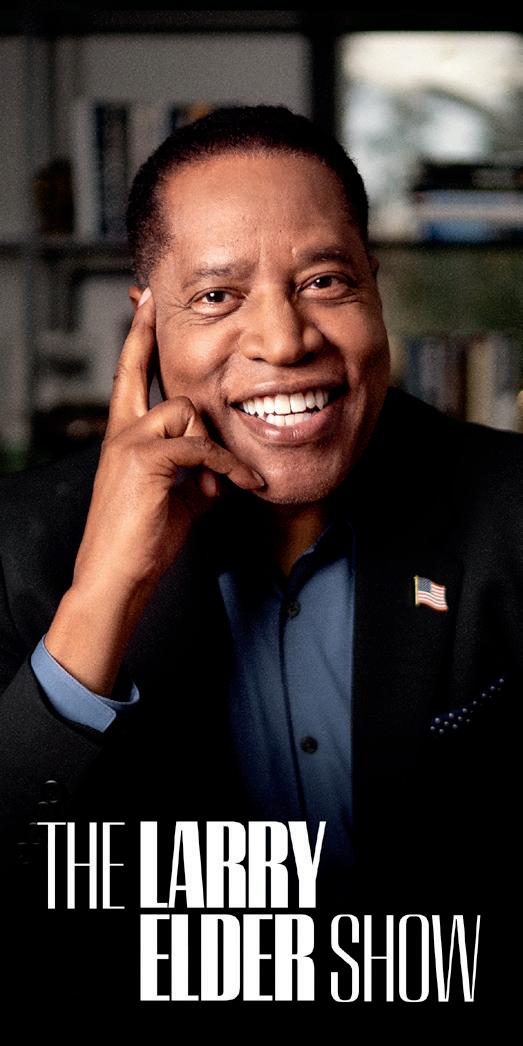
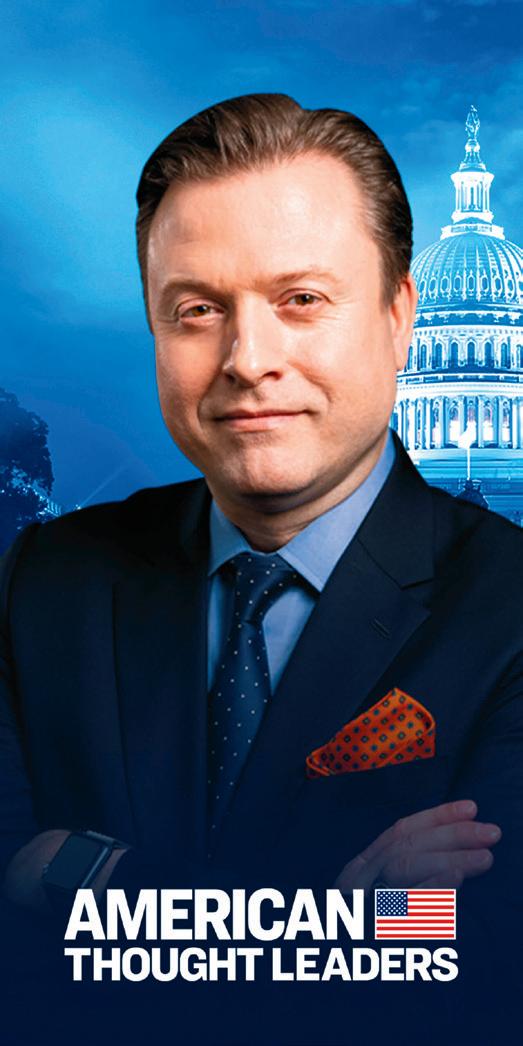




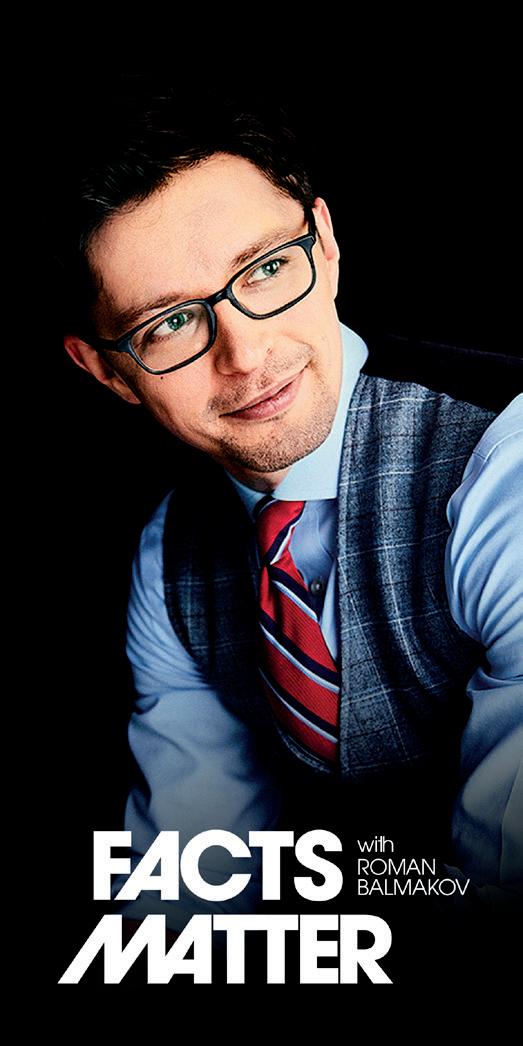









 By Andrew Thornebrooke
By Andrew Thornebrooke
The CCP appears poised to mount an attack on Taiwan in the coming years
 The U.S. Air Force Thunderbirds perform a flyover prior to the NASCAR Cup Series 64th Annual Daytona 500 at Daytona International Speedway in Daytona Beach, Fla., on Feb. 20, 2022.
PHOTO BY JAMES GILBERT/GETTY IMAGES
The U.S. Air Force Thunderbirds perform a flyover prior to the NASCAR Cup Series 64th Annual Daytona 500 at Daytona International Speedway in Daytona Beach, Fla., on Feb. 20, 2022.
PHOTO BY JAMES GILBERT/GETTY IMAGES
The ammunition is running low, casualties are immense, medicine and other critical supplies haven’t come for weeks, and a nuclear attack on the U.S. homeland is imminent.
It’s a dramatic scenario, more closely resembling a Hollywood drama than any war the United States has actually fought in the past half-century. It’s nevertheless what many expect a war between the United States and communist China could look like this decade.
Both the United States and China are investing record-breaking sums in building up their military capabilities. Leadership on both sides increasingly appear to consider such a conflict as inevitable, despite rhetoric to the contrary.
The cause for that mutual enmity is the Chinese Communist Party’s (CCP’s) claim that democratic Taiwan belongs to China, and CCP leader Xi Jinping’s desire to force that unification within a few years.
Xi has ordered the regime’s military wing to prepare for war and to be ready to start an invasion of Taiwan by 2027.

Preparing for what would be history’s most ambitious amphibious assault is not the same as actually doing it. But should the worst occur, the Biden administration or its successor will have to decide either to join the fray or to let Taiwan stand on its own and fight for its freedom.
Before U.S. leadership decides on that, however, it must answer another, more foundational question: Can the United States win a war with China?
Rep. Mike Gallagher (R-Wis.) is more invested in the new cold war between the United States and China than most.
Tasked with leading Congress’s new House Select Committee on Strategic Competition with the CCP, Gallagher is one of the few movers and shakers in the legislative branch directly engaged in developing an action plan to defend the American people, economy, and values from CCP aggression.
For him, Russia’s ongoing conquest of Ukraine, and the United States’ fail-
ure to deter it, contain all the lessons necessary to prepare for what comes next in Taiwan.
“If we don’t learn the right lessons from the failure of deterrence in Ukraine, authoritarian aggression and the CCP’s malign influence will spread to the Indo-Pacific, and our new cold war with the Chinese Communist Party could quickly become hot,” Gallagher told The Epoch Times.
“To prevent this, we have to act with a sense of urgency and do everything we can to deter a CCP invasion of Taiwan.”
That plan is much the same as it has been since 1979, when the United States passed the Taiwan Relations Act and agreed to provide the island with the arms necessary to maintain its self-defense.
The strategic landscape 44 years ago was something altogether different,
however, and the number of weapons and systems that Taiwan now requires to hold the CCP at bay is immense.
The way Gallagher sees it, neither Taiwan nor the United States is prepared for the possibility of war with China.
In November 2021, Gallagher warned, “If we went to war in the Taiwan Strait tomorrow, we’d probably lose.”
Gallagher is careful now to avoid similar doomspeak, but when asked whether he still agreed with that assessment, he said that his optimism for the United States’ performance in a war with China is limited.
“If the Chinese Communist Party invaded Taiwan today, we would not be well-positioned to defend our friend, our interests, or American values in the Indo-Pacific,” Gallagher said.
The United States must choose, he
said, to arm Taiwan to the teeth now or come to Taiwan’s aid at a much greater cost later.
Either way, the choices the United States makes now, he said, will largely determine the conditions of victory and defeat at a later date. To that end, Congress must unite to arm Taiwan and systematically counter the CCP’s malign influence at every opportunity.
“We are in the window of maximum danger, and if we are going to ensure that it’s the U.S.—not the CCP—writing the rules of the 21st century, we need to unite in overwhelming bipartisan fashion to combat CCP aggression,” Gallagher said.

Although the phrase “maximum dan-
ger” is superlative, it may still fall short of impressing the seriousness of the CCP’s growing nuclear arsenal and the role that it will play in any conflict.
The CCP’s military wing, the People’s Liberation Army (PLA), has been working tirelessly to expand and enhance the regime’s nuclear arsenal and to maintain a threat to the U.S. homeland.
The regime is expected to field 1,000 nuclear weapons by 2030, many of them capable of carrying multiple warheads. And it’s working to field hypersonic bombardment systems apparently designed to be used as a first-strike weapon.
Such capabilities would put the United States at grave risk in a war and would present a decision-making dynamic among both militaries unseen since the Cold War.
Retired U.S. Air Force Brig. Gen. Rob-
ert Spalding knows something about PLA decision making.
His career has taken him to China on more than one occasion, including a stint as a defense attaché in Beijing, where he negotiated with PLA officers on critical events and established contours for managing strategic competition.
When asked whether the United States could win a war against China over the future of Taiwan, Spalding answered clearly and simply: “No. The Chinese have too many weapons, and they are too close to home.
“The U.S. could not muster enough combat power to stop China.”
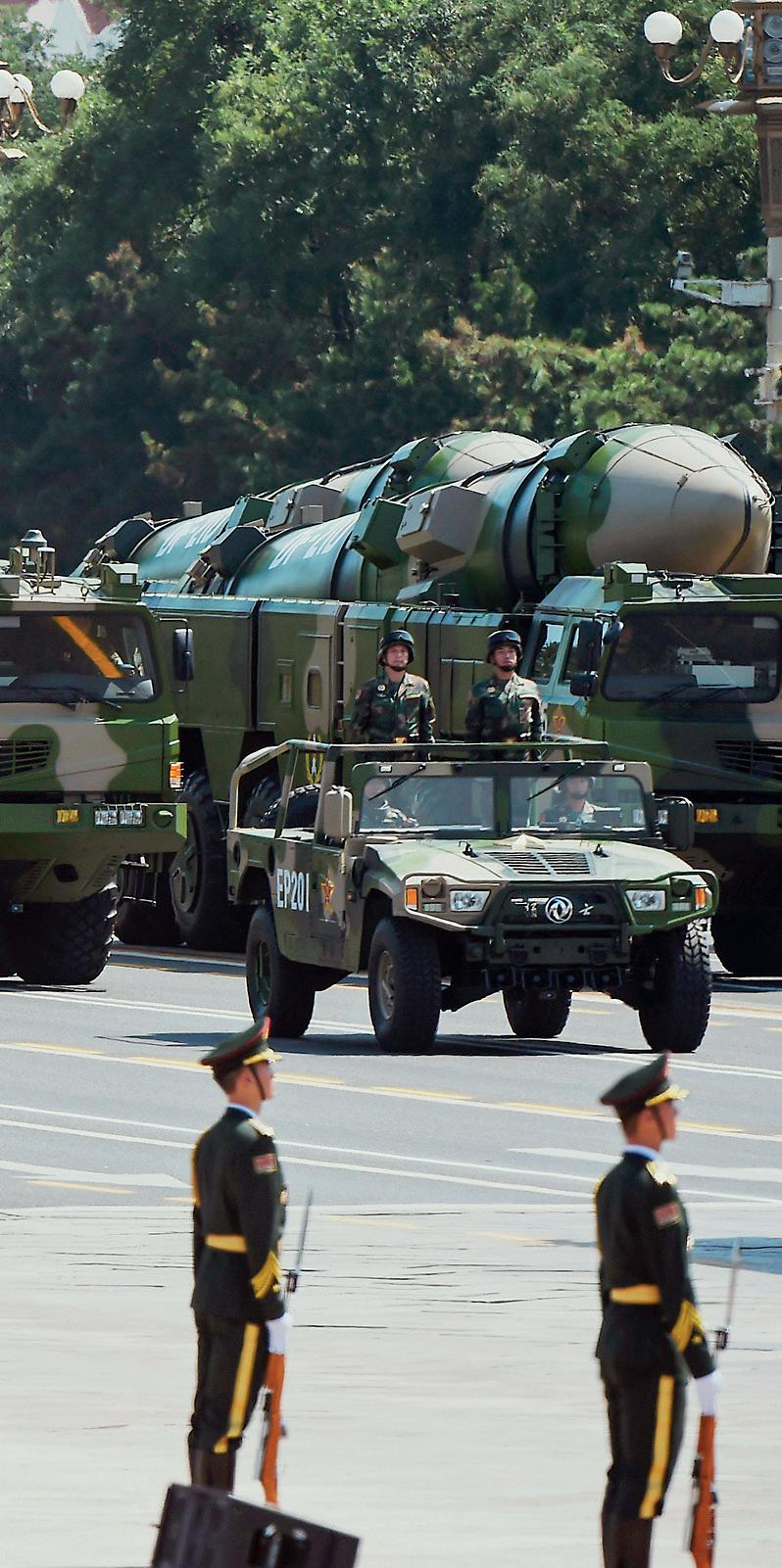
The United States’ ability to project power across 3,000 miles of the Pacific Ocean is sorely lacking, he said.
Sustaining a full combat force in the region while being threatened by the
Xi has ordered the regime’s military wing to prepare for war and be ready to launch an invasion of Taiwan by 2027.(Left) Military vehicles carrying DF-21D intermediate-range anti-ship ballistic missiles participate in a military parade at Tiananmen Square in Beijing on Sept. 3, 2015. (Above) Chinese leader Xi Jinping plans to force the unification of China and Taiwan within a few years.
PLA’s missile and rocket forces, to say nothing of its navy, would risk nuclear escalation at every moment.
Simply put, the United States would be outmanned and outgunned by China in any Indo-Pacific conflict. Strategic nuclear weapons in such a scenario become the United States’ clearest advantage—and the world’s clearest threat.
Spalding, understandably, views the use of nuclear weapons as a no-win scenario. Still, he does consider the strengthening of the U.S. nuclear deterrent an essential element in stopping China from extending its aggression beyond Taiwan.
“The only weapons that would enable us to balance the conventional military might of China are nuclear weapons,” he said. “These would give the U.S. a fighting chance but would be devastating for the U.S., China, and the world.
“Nevertheless, the surest way to war is to appear weak. This is why it is imperative that the U.S. project power. Today,
the only way is with nuclear weapons. We don’t have time for anything else.”
To that end, Spalding said the United States will need to immediately start transitioning critical supply chains, including pharmaceuticals and technological resources, out of China. Leaving the delivery of such items to China is a surefire way to lose any war.
“There is no time, but nevertheless, the U.S. needs to rebuild its industrial base now while we still have some level of control,” Spalding said.
He also said that there could be deaths at home and on the front lines because the United States would be stuck trying to create new supply chains for critical resources even as current supply chains through China were destroyed.
Embedded in Spalding’s view is a certain duality present among many today. On the one hand, he believes that a CCP invasion is inevitable. On the other, he believes that U.S. aid to Taiwan in such a war should fall short of military in-
tervention, which he said would risk a nuclear holocaust.
“[The CCP] will invade at a time of their choosing,” Spalding said. “We have to prepare for the inevitable help the Taiwanese people will need.
“If America is attacked, it will fight. That said, I believe China will not attack the U.S. directly for fear of a wider war that consumes the CCP. This and America’s nuclear weapons will prevent Armageddon if we show strength.”
Provided the United States did come to the defense of Taiwan, however, and provided it could adequately deter the PLA from launching nuclear missiles, victory would still be far from assured.
Beyond the logistical issue of supplying the front lines—that is, the problem of actually getting munitions across the Pacific—the United States simply doesn’t

have the stockpiles required to conduct anything other than a brief, perhaps weeks-long campaign in the Pacific.
Secretary of the Army Christine Wormuth said during a March 30 Senate Armed Services Committee hearing that the United States’ support for Ukraine is rapidly depleting its own munitions stockpiles and that it will be years before replacement is possible.
“One of the most important things we have learned from Ukraine is the need for a more robust defense industrial base,” Wormuth said.
“We are buying at the absolute edge of defense industrial capacity right now.”
To that end, Wormuth said that the Army is spending $1.5 billion on surging production of new munitions and depots to create an “organic supply base.”
Because of the complexity of the supply chains involved and the specialized nature of the equipment, however, such production and procurement efforts will take years, well beyond the 2025–2027 start date of a Taiwan invasion estimated by many military officials.
“Some of the machining tools that are needed to open up new production lines are just very large, complex machines themselves that take time to fabricate and time to install,” Wormuth said.
To be sure, not all of the munitions that the United States is currently hemorrhaging in Ukraine would necessarily be useful in a fight for Taiwan.
The 155-mm rounds used by many artillery systems in Ukraine, for example, would lose their preeminence to longrange anti-ship missiles (LRASMs).
But here again, the United States is simply not prepared for war.
War games demonstrate that the United States could deplete its entire arsenal of LRASMs within one single week of fighting with China, according to a January report by the Center for Strategic and International Studies think tank.
“In a major regional conflict—such as a war with China in the Taiwan Strait—the U.S. use of munitions would likely exceed the current stockpiles of the U.S. Department of Defense ... leading to a problem
of ‘empty bins,’” the report states.
“The problem is the U.S. has such low stockpiles for those [LRASMs] that in our war games, in multiple iterations of the wargame, we run out [of LRASMs] in less than a week virtually every time,” report author Seth Jones said in an associated video.
“We cannot fight in that case in protracted war because we don’t have sufficient supply of munitions.”
munitions production. Supply chains are no less complicated for those entities, however, and are likewise expected to take years to become functional.
The risk that a war for Taiwan morphs into a catastrophic nuclear conflict or else depletes the United States’ arsenal of vital munitions and leaves it enfeebled in the western Pacific appear to be high.
But what if they could be overcome?
Sam Kessler is a national security and geopolitical risk analyst for North Star Support Group, an international risk advisory firm. He said victory is possible in such a scenario, but only narrowly.
Kessler said that the war would need to be fought and won quickly to prevent nuclear escalation, retain the nation’s stockpiles, and ensure the global economy doesn’t spiral into nothingness as the world’s two largest economies duke it out.

To do that, he said, the United States needs the support of its allies to stem the outward flow of manpower and matériel.
“Although the U.S. has significant, powerful capabilities at its disposal, a potential war over the defense of Taiwan would need to be fought and won within a short time frame,” Kessler said.
On this issue, military procurement programs are thus far proving to be of little worth. Though Army leaders such as Wormuth may point to renewed investments in artillery and speak of growing the nation’s stockpiles, one critical and inconvenient fact remains: Nearly the entirety of the U.S. military’s precision munitions is built by the private sector.
Assistant Secretary of the Army Douglas Bush spoke on the issue during a March 3 talk at the Center for Strategic and International Studies.
“The broader joint view is, of course, that a fight with China will be very much a precision munitions fight,” Bush said.
To overcome that gap in manufacturing ability, he said, the U.S. Army is funneling money to private corporations to effectively subsidize precision
“If there is a war between the U.S. and China, the U.S. needs to have its longstanding allies involved and committed under a unified banner.”
To that end, Kessler said that the need for allies will be most prevalent in securing global supply chains, bolstering the U.S. economy, and providing critical, nonmilitary defense and security support in domains such as space and cyber.
“The risk is a long, drawn-out conflict that depletes both manpower and resources over a period that won’t be so easily replaced in a world where supply chains, logistics, and manufacturing outlets are being reevaluated and restructured to meet changing realities,” he said.
“After all, a potential war will not just be about direct fighting on the shores of Taiwan but also in other domains of
“If the Chinese Communist Party invaded Taiwan today, we would not be well-positioned to defend our friend.”
Rep. Mike Gallagher
warfare that greatly impact U.S. standing and power projection at home and abroad, which can also potentially impact its global partners and allies.”
Because of the technological and economic interconnectivity of the world, he said, most nations would become involved in such a war one way or another, regardless of whether they sought to remain neutral.
Kessler, therefore, suggested the creation of a multilateral coalition of the willing, not unlike the one deployed in the Gulf War.
On this point, there is one critical problem. Because the United States would be entering a war of its own volition, it wouldn’t be entitled to the benefits of NATO’s collective defense clause.
Thus, although regional allies such as Japan and Australia could well join the fight, the United States’ European partners would likely be absent in the actual fighting.
Indeed, French President Emmanuel Macron suggested as much in early April, saying that Europe must resist becoming “America’s followers” on the issue of Taiwan.
To shore up the United States’ position then, Kessler said that the nation needs to start turning up its diplomacy efforts now, in order to ensure it receives security aid and other benefits from its partners in the war.
“Sooner or later, they would likely end up being in situations where their hands are forced to declare a position on the matter,” Kessler said. “Whether war occurs or not, the U.S. needs full assurance from its longstanding partners and allies that they have their support and vice versa.
“To make this happen requires aggressive and proactive diplomacy as well as presenting a strong and rational case for creating a coalition of the willing.”
Here again, though, the United States isn’t the only one with allies.
Though the CCP regime doesn’t formally engage in NATO-style alliances, it does have a string of partners across the globe who would be willing to either engage in direct support of its war effort or otherwise pursue their own destabilizing interests with the United States distracted.
“Alliances and partnerships are crucial to both China and the U.S but each implements them differently,” Kessler said.
“The CCP recognizes partners in the form of client states that could play a role in helping destabilize American leadership in the international system, while spearheading a multipolar system that they can lead and project influence themselves.”
The result of the CCP’s push for multipolarity is that its own partners could initiate destabilizing conflicts of their own.
One report by the Center for a New American Security think tank, for example, postulates that North Korea could use a CCP invasion of Taiwan to start its own attack on South Korea.
And the problem isn’t limited to East Asia.
Iran could initiate further hostilities against U.S. forces in Syria or even invade neighboring Iraq. Russia, meanwhile, could extend its hostilities from Ukraine to Moldova, or otherwise provide direct military support to China. Brazil, Nicaragua, and South Africa could all capitalize on the event to increase their ties with China and Russia while avoiding engag-
ing in hostilities themselves.
The result would be a world at war if not a world war outright.
“Each of these nations are skilled in the distraction game, and a war effort in defense of Taiwan would present them with a unique opportunity to attempt at catching the U.S. off guard to gain a victory or prize out of it,” Kessler said.

“The likelihood of such regional conflicts erupting in these areas is very high.”
He said he believes that the extent to which each nation takes advantage of a U.S.–China war will be dependent on not only their relationship with China, but also their own capabilities, goals, and political-economic realities.
Although war might suit Russia, for example, smaller economic partners such as South Africa and Brazil would be more likely to engage in increased trade or sanctions-busting.
The resulting effect is political chaos
War games demonstrate that the United States could deplete its entire arsenal of LRASMs within one single week of fighting with China, according to a report.
and a world in which instability and disruption are the norm.
But what if we’re getting it all wrong? What if Taiwan is not the next global catastrophe waiting to happen, and the United States can fight and win but doesn’t even need to?
Such is the perspective of former acting Defense Secretary Christopher Miller.
For Miller, the military decision-making apparatus is prone to see only what it wants to see. Everything looks like a nail to a hammer, the old saying goes.
“I know the one thing we will get wrong is, we will mispredict the next major conflict,” Miller said during an April 4 talk with the Cato Institute, a libertarian think tank.
“That’s the only thing I know.”
On that note, Miller said that he worries the United States is overestimating the capabilities and expertise of the Chinese communist regime in the same way it did those of Russia before the full-scale invasion of Ukraine.
Far from being a peer military competitor, Miller suggested, the CCP could be deploying a strategy similar to the one used by the United States to defeat the Soviet Union without overt conflict during the Cold War.
By fooling the United States into believing that war is constantly imminent, the CCP could actually be goading the United States into destroying its own economy through excessive investments in major military platforms, Miller said.
“I think they’re goading us, and we’re
just taking it [at face value],” Miller said.
As such, Miller said that the threat to Taiwan’s continued de facto independence is a reality, but that the United States could be playing into the CCP’s plans by heavily investing in ultra-expensive and easily targetable systems such as fighter jets and aircraft carriers.

Miller pointed instead to the four elements of national power: diplomacy, information, military, and economics.
To obtain victory against the Chinese regime, and to preserve greater liberty across the world, he said, the best path forward for the United States is to better leverage the nonmilitary elements of national power.
“I believe with the Chinese threat, the way to approach that is a very subtle and indirect approach ... irregular warfare,” Miller said.
“Let’s go ahead and use a little more ... diplomacy, information, and economics, and let’s go ahead and back off on the military for a little while, because we have time. If we’re wrong, we can spin things up.”
When asked by The Epoch Times what advice he had for directing the nation’s military development, given that a future war with China was as of yet unwritten, Miller said that the best course of action was to hedge the nation’s bets.
“If you’re a business person and you’re in an unpredictable business climate, what do you do? You hedge,” Miller said.
“We can’t go all in on any one thing. We need to have a wide range of capabilities.”
To simultaneously avoid the disaster of war in Asia and defeat the regime, he said, the best weapon in the U.S. arsenal is the truth about the CCP.
By shining an unflinching light on the atrocities committed by the regime every day, and by ensuring that those atrocities are seen and understood by the Chinese people, the regime will crumble to internal pressures.
“My belief is that authoritarian, totalitarian governments fear one thing: popular discontent and popular uprising,” he said. “The thing that they fear most is not fleets of aircraft carriers, tanks, or expeditionary logistics. They fear information. And that’s one of the key components of irregular warfare.
“Just tell the truth. It will work through it.”
The Three Mile Island nuclear plant near Middletown, Pa., on March 26, 2019. Nuclear power has retained a steady 20 percent share of the nation’s collective electrical output since 1990.
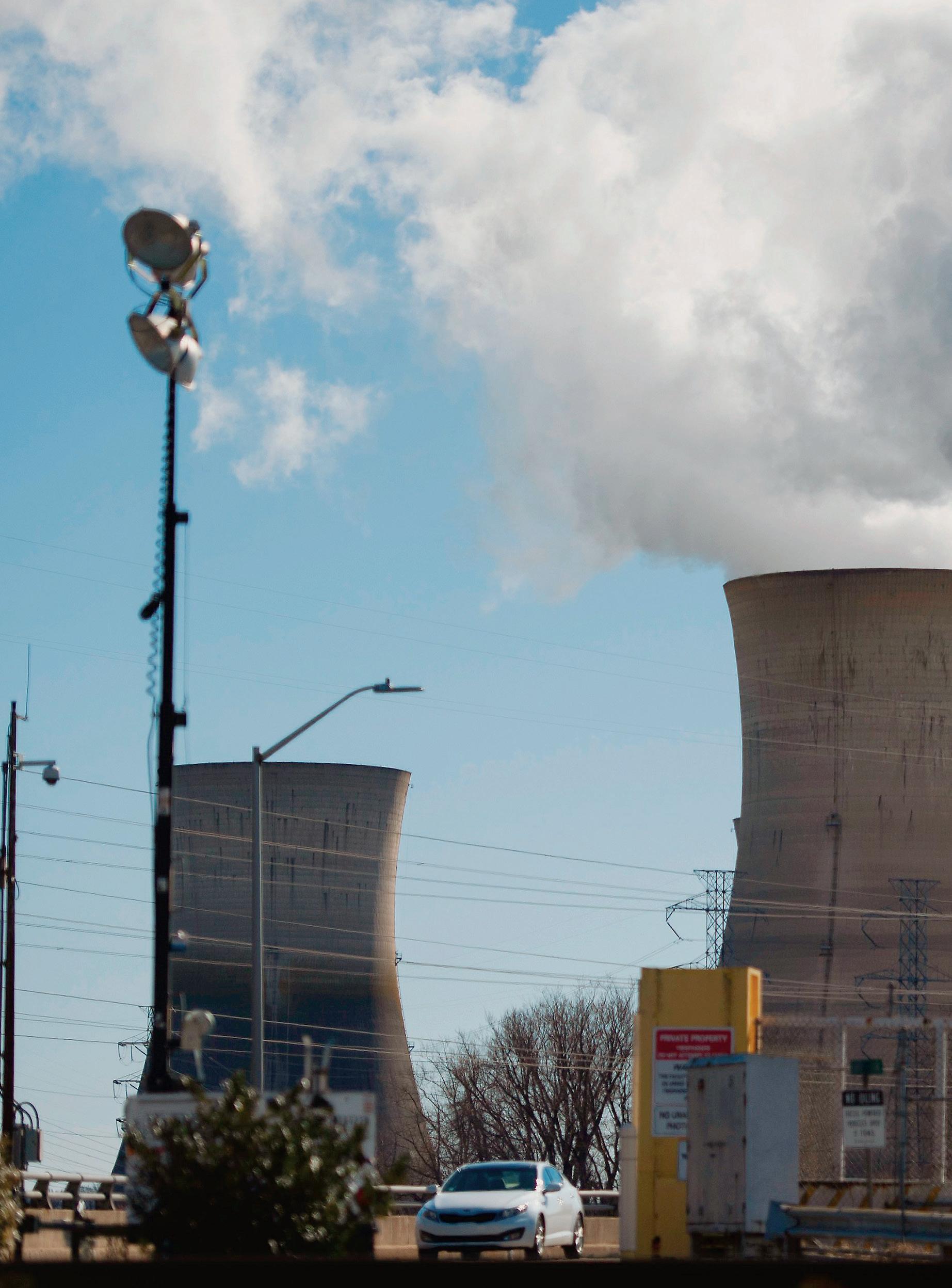 PHOTO BY ANDREW CABALLERO-REYNOLDS/AFP VIA GETTY IMAGES
PHOTO BY ANDREW CABALLERO-REYNOLDS/AFP VIA GETTY IMAGES

As demand rises, industry seeks to shore up uranium supply chains
BY JOHN HAUGHEYThe Biden administration’s commitment to transitioning to renewable “green” energies such as electric, nuclear, solar, and wind from fossil fuels over the next decade has fostered cart-before-horse disruptions and disconnects across an array of industries.
For instance, initiatives adopted over the past four years, when Democrats ruled both chambers in Congress in the Bipartisan Infrastructure Law (BIL) and the Inflation Reduction Act (IRA), aggressively promote the development of electric vehicles (EV) despite domestic manufacturers having scarce access to lithium and other key minerals needed to build EV batteries.
As a result, Republicans and energy policy critics say, Biden’s “rush to green energy” is inadvertently making U.S. manufacturers reliant on imports from the People’s Republic of China, which dominates the lithium supply chain, from mineral extraction to battery development.
A similar scenario is unfolding in nuclear power generation with the BIL, the IRA, and other federal directives pushing for expansion of the nation’s nuclear energy capacity even though it has been more than 30 years since enough uranium was enriched in the United States to supply domestic nuclear power plants.
As a result, Republicans and energy policy critics say, the nation’s nuclear power industry must continue importing uranium and rely on a supply chain dominated by Kazakhstan, Uzbekistan, and Russia, from ore extraction to enrichment.
Currently, 95 percent of the ore that fuels 55 U.S. nuclear power plants is imported, including nearly a quarter from Russia.
The momentum to revitalize uranium mining, processing, and enrichment for nonmilitary use to expand domestic commercial nuclear power generation is arousing industry enthusiasm and has bipartisan support.
But some in the industry are also raising concerns about timing because, essentially, the United States is in a race
to develop a sustainable uranium supply chain before demand for nuclear energy makes hundreds of millions of Americans even more dependent on imported processed uranium from Russia and Russian-influenced states.
“It is an exciting time. Demand for nuclear is growing,” Uranium Producers of America (UPA) President Scott Melbye told The Epoch Times. “We do have this dirty secret though—our Russian dependency.”
How to build that uranium supply chain independent of Russia—which could take years—while encouraging increased domestic nuclear power development is spurring a great deal of “behind the scenes maneuvering” in Congress, U.S. Nuclear Industry Council (USNIC) President and CEO Todd Abrajano told The Epoch Times.
“There are a lot of things going on ‘The Hill,’” Abrajano said. “I think really they are just trying to figure out where the funding is going to come from.”
The bottom line is that if the United States is serious about increasing its nuclear power capacity, and the Biden administration is sincere about incentivizing carbon-free energy production, industry representatives say it will take more money and need to happen more quickly than current legislative and regulatory approaches permit.
About 61 percent of electricity transmitted by “utility-scale” power plants in the United States is generated from fossil fuels, coal, natural gas, petroleum, and other gases, according to the Department of Energy (DOE).
Slightly more than 20 percent of the nation’s electricity comes from renewable energy sources, the DOE documented in 2021, and nearly 19 percent is generated by nuclear energy plants.
According to the U.S. Energy Information Administration, the number of nuclear power plants in the United States declined from 104 in 2012 to 55 in December 2022.
Despite the loss of nearly half of the operating plants in a decade, nuclear power has retained a steady 20 percent share of the nation’s collective electrical output since 1990.
The 55 nuclear power plants across 28 states include 93 operating reactors and are, on average, 40 years old, according to the U.S. Nuclear Regulatory Commission. The most recent nuclear plant to come online was in 2016, the first new one since 1996.
Nuclear power constitutes half of the carbon-free electricity generation in the United States, according to the Department of Energy.
As such, it is a popular energy source among those who regard “green energy” development as a key priority and has been provided significant grant potential under the Trump and Biden administrations.
Among initiatives is the creation of a DOE-funded uranium reserve program, a $2 billion DOE Advanced Reactor Demonstration Program, and a $700 million IRA allocation to scratchstart high-assay low-enriched uranium (HALEU) production.
Since Congress convened its 20232024 session, several significant bills related to the nation’s nuclear power industry have been filed.
Bills filed this year include proposals to ban the import of Russian uranium, establish a national “nuclear fuel program,” and allow the DOE and Commerce Department to develop commercial nuclear energy programs
with allied nations under the proposed “Accelerating Deployment of Versatile, Advanced Nuclear for Clean Energy Act,” or “ADVANCE Act of 2023.”
In February, House Energy & Commerce Committee Chair Rep. Cathy McMorris Rodgers (R-Wash.), filed HR 1042, the Prohibiting Russian Uranium Imports Act, which would ban the importation of the ore from Russia within 90 days of adoption.
“I am leading on a bill that aims to eliminate our reliance—which is currently about 24 percent—on Russian nuclear fuels for our nuclear reactors,” Rodgers announced in a Washington committee hearing.
“Expanding our leadership in developing and expanding nuclear energy is going to be one of our top priorities this Congress, and addressing our reliance on Russian fuel is just the beginning.”
Former Deputy Energy Secretary Mark Menezes said during the same hearing that because energy regardless of generation source is an open-market traded commodity, “our nuclear [power plant] fleet is very sensitive to fuel costs.
“Of course,” he added, “the Russians know this, which is why they continue to provide cheap uranium fuel and a reason why we continue to import enriched uranium from Russia today.”
In March, U.S. Sens. John Barrasso (R-Wyo.) and Joe Manchin (D-W.Va.), the Senate Committee on Energy & Natural Resources chair, introduced a bipartisan companion bill to Rodgers’s proposal in the upper chamber to ban imports of Russian uranium.
“Every dollar we give to Russia supports Putin’s brutal war on Ukraine,” Barrasso said when he filed the bill. “America’s nuclear industry is ready to transition away from Russian uranium. Wyoming has the resources we need to boost production at home.”
Abrajano said that Washington-based USNIC, which represents 80 domestic companies engaged in nuclear innovation and supply chain development, supports the proposed Russian uranium ban, as does the UPA, which is based in Santa Fe, New Mexico, and promotes the interests of more than a dozen U.S. uranium companies.
“What we are seeing is a realization that we shouldn’t be taking Russian uranium
and paying Russia $1 billion a year in revenue,” UPA’s Melbye said before expressing reservations about the feasibility of finding alternate sources of uranium within 90 days of banning Russian ore.
He said that he thinks there isn’t “any question that we will ban Russian uranium,” but without a stable, secure supply line, now may not be the time.
Melbye noted that the proposed ban isn’t included in the House GOP’s massive omnibus energy bill, HR 1, indicating that the prohibition measure’s “passage in the Senate is uncertain.”
He said the Trump administration investigated whether to place a Section 242 tariff on Russian uranium the way it did on steel but “decided not to go down that route.”
Instead, a task force of federal agencies was asked to “come up with recommendations” that Melbye said included the creation of a uranium reserve that, once enacted and funded, would make a ban on Russian ore more actionable.

In December 2020, Congress allocated $75 million to establish the DOE’s
National Nuclear Security Administration (NNSA) uranium reserve to ensure a backup supply in the event of a significant market disruption and to support the operation of U.S. uranium mines.
Last year, the NNSA solicited bids to purchase up to 1 million pounds of U3O8 (uranium oxide) from vendors that had “produced uranium at a domestic uranium recovery facility at any time” since Jan. 1, 2009, from “inventory already in storage in the USA.”
In December 2022, NNSA announced sales agreements with five companies to supply the uranium reserve program: Energy Fuels Inc., Peninsula Energy, enCore Energy, Ur-Energy, and Uranium Energy Corp.
There was industry criticism about delays in awarding the bids, Melbye said, but the program “is good policy for a couple of reasons,” primarily because it “seeds” a domestic market for companies to sell uranium to the federal government, which can then stockpile it for sale to commercial plants.
“As opposed to grants or tax credits, we think the uranium reserve takes taxpayer dollars and taxpayers get a hard asset for it,” he said.
But Melbye, Abrajano, and others criticized the DOE and Biden administration for awarding the contracts nearly two years after they were authorized, “losing valuable time as the Russian war in Ukraine escalated.”
Plus, both agreed, $75 million is “half of what was needed” with the UPA, USNIC, Nuclear Energy Institute, and United Coalition for Advanced Nuclear Power among industry groups lobbying Congress to boost reserve funding in the fiscal 2024 budget to $150 million. Abrajano said, “I don’t know where [the $150 million request] is in the process.” He noted that there is solid bipartisan support for doubling the funding to ensure “the program is successful.”
“Under various bills going forward, we believe it is very that likely that the uranium reserve gets fully funded,” Melbye said.
The Energy Act of 2020 authorized a HALEU Availability Program that received $700 million from the IRA to get it up and running. Essentially, there is no current capacity in the United States to make HALEU, a fuel mostly produced

Workers at the Turkey Point Nuclear Reactor in Homestead, Fla., on May 18, 2017. Nuclear power plants in the United States include 93 operating reactors that are on average 40 years old, according to the U.S. Nuclear Regulatory Commission.
on the global market by Russia.
The DOE’s Office of Nuclear Energy issued a request for bids in October 2022 with contracts expected to be issued soon.
In December 2022, the DOE opened a HALEU Consortium to “any U.S. entity, association, and government organization involved in the nuclear fuel cycle,” and—at the DOE’s discretion—“organizations whose facilities are in ally or partner nations.”
HALEU development is key to capitalizing on innovations such as advanced small modular reactors (SMRs) that could revolutionize the delivery of nuclear-generated power through the availability of relatively inexpensive, transportable reactors.
The program “takes steps to revitalize our fuel sector more quickly than market conditions would achieve,” Melbye said. “There is a lot of opportunity right now [in SMRs], which can be something the U.S. excels at” and could be pursued with “export initiatives” in Europe and elsewhere around the world.
“We have to get out in front of the Russians and Chinese [in SMRs],” he said. “[But] we cannot rely on Russia
OF THE ORE THAT FUELS 55 U.S. nuclear power plants is currently imported, including nearly a quarter from Russia.
for HALEU.”
As with the $75 million for the uranium reserve, industry representatives say the $700 million for HALEU development is too little and will come too late unless funding is boosted.
“The program is not being funded to the totality that it needs to be,” Abrajano said, noting Congress needs to earmark between $1.5 billion to $2.5 billion to drive HALEU development more quickly.
Enrichment and conversion are the “heavier lifts” for industry operators to develop, Melbye said. To develop a HALEU supply chain, it “will require at least $2 billion to $3 billion in investment” from government to incentivize.
It’s a big ticket, but, as background sources with the United Coalition for Advanced Nuclear Power told The Epoch Times, there is a successful precedent in the federal government of doing just that with nuclear energy.
In 1955, the Eisenhower administration created a $1 billion fund to induce the development of a light-water nuclear power industry. By 1980, U.S. producers were providing more than 90 percent of the uranium needed to fuel commercial nuclear power plants.
Melbye said that the United States started dialing back its uranium industry beginning in the 1980s when the country was self-sufficient, noting that the United States may never be able to produce more than half the uranium the nation’s nuclear plants need but can be self-sufficient if Western European and Canadian sources are included in the calculation.
“We have an industry that can be competitive on a global scale,” he said. “Ultimately, markets are going to dictate these things.”
With some grumbling about slow-funding the uranium reserve and under-
IT HAS BEEN MORE THAN 30 YEARS since enough uranium was enriched in the United States to supply domestic nuclear power plants.
funding HALEU development, a companion bill in Congress would merge the uranium reserve into a larger Nuclear Fuel Security Program that would also encourage production of both HALEU and low-enriched uranium (LEU).
The proposed Nuclear Fuel Security Act (NFSA), co-filed on Feb. 15 by Sens. Manchin and Barrasso, calls for the creation of a national effort to extract, stockpile, and process domestic uranium to secure a “mine-to-market” supply chain within the United States and establish a national reserve of uranium.
Companion House measure HR 1086, filed by Rep. Robert Latta (R-Ohio) and six Republican co-sponsors, will “restore America’s leadership in clean, nuclear energy,” Rodgers said in a Feb. 7 hearing.
The proposed NFSA directs the DOE to accelerate “on-shoring nuclear fuel production to ensure a disruption in Russian uranium supply [that] would not impact the development of advanced reactors or the operation of the United States’ light-water reactor fleet.”
Melbye said if the Manchin-Barrasso measure is adopted as proposed, the $75 million uranium reserve and $700 million HALEU programs would evolve into “a down payment [to] help kick-start uranium capacity that has been idled due to the market tactics of state-owned uranium entities in Russia and elsewhere.”
The NFSA would authorize the DOE to establish a Nuclear Fuel Security Program to “ensure a disruption in Russian uranium supply would not impact the development of advanced reactors or the operation of the United States’ light water reactor fleet.”
The NFSA calls for the DOE to “expeditiously increase domestic production” of LEU and HALEU to “ensure the availability of domestically produced, converted, enriched, de-converted, and reduced uranium,” and to address “gaps
THE NUMBER OF NUCLEAR power plants in the U.S. declined from 104 in 2012 to 55 in December 2022.
and deficiencies” in that front end of the nuclear fuel cycle by “partnering with countries that are allies or partners of the United States if domestic options are not practicable.”
The bill authorizes $3.5 billion over 10 years for nuclear fuel development but specifies that up to $1 billion go to HALEU purchases made by the end of fiscal 2028.
Melbye said adoption of the NFSA and a $6 billion Civil Nuclear Credit Program approved in the BIL to upgrade nuclear power plants that use uranium “produced, converted, enriched, and fabricated into fuel assemblies in the United States” are regarded as must-pass by the industry.
And those prospects are, suddenly, radiantly bright.
Melbye said he has been in the nuclear power industry for close to 40 years and “is used to the political right supporting nuclear energy as part of an ‘all of the above’ strategy,” but all that is changing.
“What I am seeing—we’ve always been opposed by the left—what I am seeing now is Democrats coming around,” he said, noting that “green energy” proponents are “going to have to embrace nuclear as a key component.”
Nuclear power makes sense regardless of how you analyze it, Melbye said. “Energy policy is not virtue signaling like banning plastic utensils and plastic straws. We’ve got to get it right.”
Although clean energy is a fine objective, the industry prefers doing it with “more math and science and less ideology” than constitutes much of the energy discussions in Congress, he said.
But for now, he’s basking in bipartisan support.
“There are not many other things that Republicans and Democrats agree on today but, it seems, nuclear power— and China.”
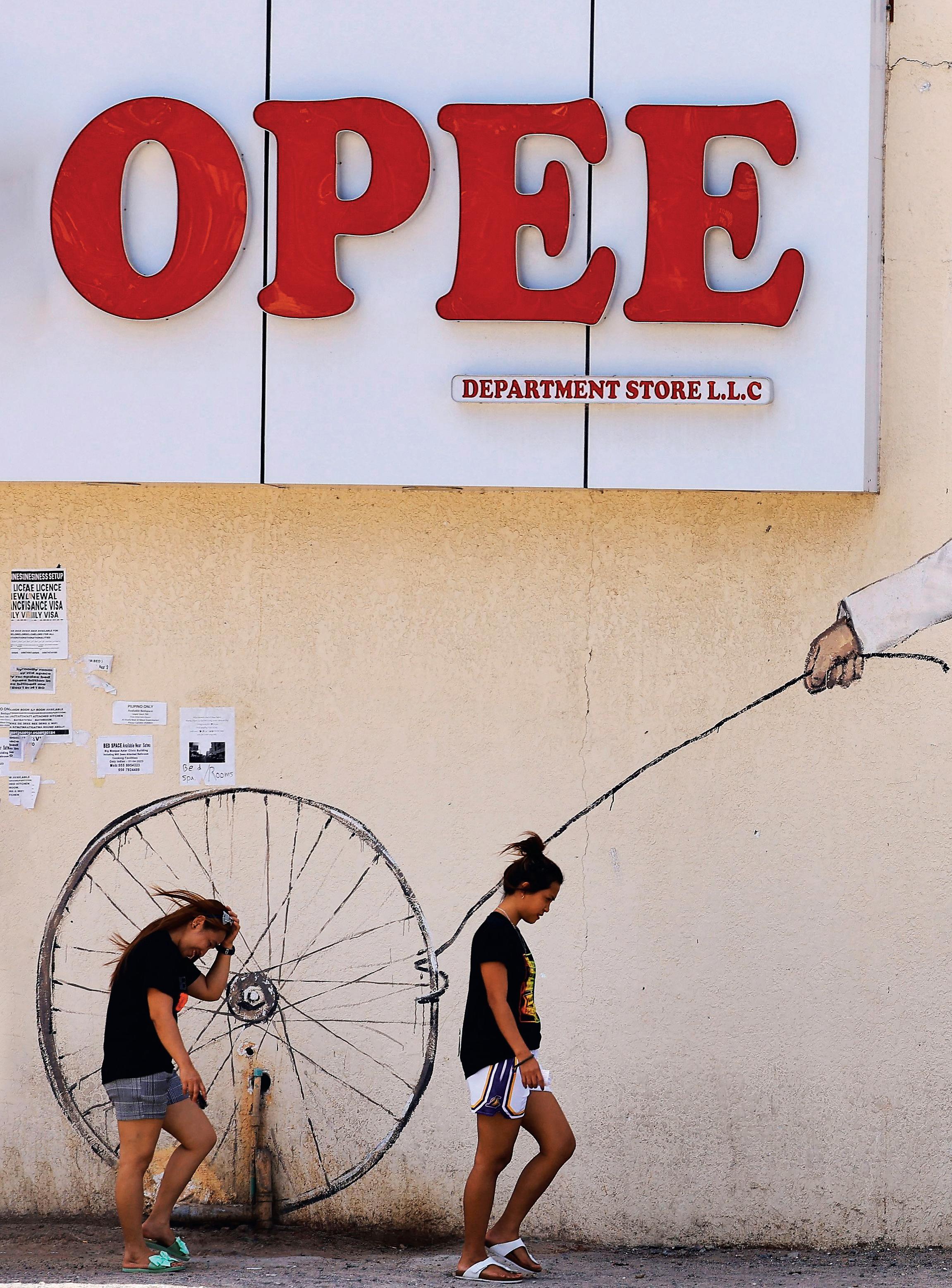
 WOMEN WALK PAST A MURAL OF EMIRATI children playing, at a market in Dubai on April 15.
PHOTO BY KARIM SAHIB/AFP VIA GETTY IMAGES
WOMEN WALK PAST A MURAL OF EMIRATI children playing, at a market in Dubai on April 15.
PHOTO BY KARIM SAHIB/AFP VIA GETTY IMAGES
 PHOTO BY CENGIZ YAR, JR./ AFP VIA GETTY IMAGES
CONSTITUTION
PHOTO BY CENGIZ YAR, JR./ AFP VIA GETTY IMAGES
CONSTITUTION
Amish dair Y Farmer r eu Ben King’s farm in Lancaster County, Pennsylvania, was raided on Jan. 12, 2022, by the Bureau of Alcohol, Tobacco, Firearms, and Explosives (ATF), which charged King with dealing in firearms without a license and confiscated 615 guns.
An undercover ATF agent bought five guns from King between October 2019 and March 2020, according to court papers filed by the ATF.
On June 11, 2020, the ATF served King with a cease-and-desist letter advising him to get a federal firearms license (FFL) before selling any more firearms. King told the ATF that he didn’t sell firearms as a business and only occasionally sold personal long arms for which he had no further use.
After that letter, King sold four firearms to undercover state troopers in
November 2020, March 2021, and December 2021, prompting the charges.
But King doesn’t need an FFL, his attorney, Joshua Prince, told The Epoch Times. He’ll argue that the FFL itself is unconstitutional.
Firearms sellers—those who sell occasionally from a private collection and those who hold an FFL—have come under more scrutiny since June 2021, when President Joe Biden declared “zero tolerance for rogue gun dealers that willfully violate the law.”
As of fiscal year 2022, the ATF reported that there were 136,563 active FFLs in the United States.
Since Biden took office, there has been an uptick in FFL revocations, Mark Oliva, spokesman for the National Shooting Sports Foundation, told The Epoch Times. Anecdotally, attorneys defending clients facing FFL revocations, or warnings to get an FFL, said they’ve
The ATF inspects FFL holders and began publishing that inspection data in fiscal year 2022.
In October 2021, it inspected 438 FFL holders, issued 11 warning letters, and revoked four licenses.
In February, the ATF inspected 699 FFL holders, issued 10 warning letters, and revoked 19 licenses.
In total, between those two dates, the ATF inspected 9,940 FFL holders, issued 171 warning letters, and revoked 168 licenses.
“They are now revoking permits for what was previously listed as a ‘finding’ during the inspection. And that could have been a minor clerical error, misplaced decimal, putting the date in the wrong column, something may have not been signed correctly,” Oliva said. “Those are all minor findings that during inspections would have been noted as ‘you need to make these corrections.’ Now they are being termed as ‘willful violations’ and are grounds

for the ATF to revoke Federal Firearms Licensees’ license.”
A revoked FFL means the loss of a livelihood, he said.
“Most of your firearm retailers are mom-and-pop shops. This is their livelihood. By and large, your firearm retailers are doing the best they can to be able to stay within the laws and within the regulations that protect, govern the firearm retail industry,” Oliva said. “The crackdown on this, the zero-tolerance policy has not been in one particular region or state. It has been across the country, and we’ve seen that it has affected people that have lost their licenses.”
Enforcement and interpretation of the law change depending on who’s in the executive office, Prince said.
“We see that administrative agencies, especially the Bureau of Alcohol, Tobacco, Firearms, and Explosives, [are] influenced heavily by the administration in office,” he said. “And that’s extremely disconcerting, because that violates all tenets of what our Founding Fathers intended with our Constitution. The law is the law. It should not change dependent
Between October 2011 and February 2023, the ATF inspected 9,940 FFL holders, issued 171 warning letters, and revoked 168 licenses.
upon the administration currently in the White House.”
The Epoch Times asked the ATF for a response to Prince’s comment and for comment on increased FFL revocations. A spokesman provided a link to statistics but didn’t offer comment.
Written in 1791, the Second Amendment protects the right to keep and bear arms.
“You will not find any laws in existence around the time of the founding that required an individual to obtain a license to be able to sell firearms,” Prince said. “It wasn’t until 1938 that the first Federal Firearms Act, requiring sellers of firearms to become licensed, was enacted.”
That was 147 years later.
The U.S. Supreme Court has said that the understanding of the Second Amendment around the time of the founding is the best measure of what the founders intended.
“What the U.S. Supreme Court said you would look to are laws that were passed in close proximity to the enactment of our Bill of Rights, or at least the Second Amendment, that would suggest that those laws were not believed to be violative of the Second Amendment,” said Prince, who’s a Republican and currently campaigning to become a judge in Pennsylvania’s Commonwealth Court.
“The Court said that looking to laws passed in the 1850s is too late and that those really cannot shed any light on the understanding of the Second Amendment.
“It is the government that must demonstrate that the regulation is consistent with the nation’s historical tradition of firearm regulation. The government has to establish that any current-day law
ATTORNEYS SAY THEY’VE SEEN MORE FEDERAL FIREARMS LICENSE REVOCATIONS IN THE PAST TWO YEARS.
is consistent with the nation’s historical tradition of firearm regulation.”
During the January barn raid at King’s property, the ATF said it recovered ample evidence of an ongoing gun-selling business, including 615 guns, many marked with price tags; approximately 10,000 rounds of ammunition; detailed records showing thousands of purchases and sales of guns over many years; receipts for advertisements placed in a local newspaper offering firearms for sale under several names and phone numbers; and plastic bowls containing numerous pre-marked price tags sorted by denominations.
King had approximately 30 brandnew, Savage Axis rifles (26 in the same caliber)—each in an unopened factory box and all in a larger palleted shipping box—and a similar stack of 19 Silver Eagle shotguns (18 in the same gauge), also new and boxed, according to court documents.
“We’re talking about hunting rifles and shotguns. We’re not talking about handguns,” Prince said. “The ATF has on their own website that it is not unlawful to sell firearms that you’ve purchased.”

And the ATF doesn’t have a rule for how many firearms a person can sell before they would need a license.
King is “absolutely astonished,” Prince said. “He never believed that anything he was doing could be construed as being unlawful.”
But if King did need a license to sell guns from his barn, the ATF wouldn’t issue him one because the ATF requires photo identification to obtain an FFL, with no exceptions. Because of his religion, King can’t have his photo taken. That’s why his driver’s license—he drives a horse and buggy— reads “no photo required” where the photo would be. Pennsylvania allows religious exemptions for photos on driver’s licenses and concealed carry gun permits.
That’s another constitutional issue
because requiring a photo is a violation of King’s religious freedom, according to Prince.
The government aims for the disarmament of law-abiding citizens and loathes the idea of lawful, private firearm ownership, and Americans should be concerned, according to Oliva.
“Your rights are sacrosanct,” he said.
“Your rights belong to you. They don’t belong to the government to dole out to you. If that were the case, these would be privileges. But these are rights that existed prior to the creation of our nation. They are endowed to you by your creator. If we start to relegate any of our rights to second-class rights, then there are no longer rights at all, and any of those rights can fall at any time. ... It is your right to own a firearm in America provided you are a law-abiding citizen. And these are attempts to chip away at those rights, undermine the Second Amendment, and eliminate it, ultimately.”

effective treatment for authorities ignored

IF the authorities had heeded advice from those with the most profound knowledge of the mechanics of COVID-19, the pandemic could have been handled more adeptly, according to an immunologist who is one of perhaps a few hundred in the world with that specific expertise. Instead, he said, his and others’ voices were silenced.
Shortly after news of the emergence of the SARS-CoV-2 virus in Wuhan, China, in early 2020, Vojtech Thon, a clinical immunologist and professor at Masaryk University in the Czech Republic, started examining tissue samples of infected patients. His goal wasn’t just to understand how the virus infects people but mainly to see the immune response dynamics that would protect a person. He focused on the mucosal system in the nose, mouth, and lungs— his area of expertise.
His findings were striking and ran counter to many of the public health narratives heard worldwide.

He concluded that:
1) Early treatment was possible, available, and critical.
2) Pandemic mitigation measures were misused and, in many cases, counterproductive to fighting the disease.
3) Vaccines were rolled out improperly and presented to the public inaccurately. They couldn’t achieve sterilizing immunity, that is, elimination of the virus before it could multiply in the body.
Virtually all of this was known at the pandemic’s beginning or at least by late 2020. Yet his attempts to make his expertise available to authorities were largely shut down.
The lung tissue damage that Thon saw in severe COVID-19 cases resembled the damage that results from a disease he knew very well—obliterative bronchiolitis, or “popcorn lung.”
The implications were far-reaching. As he further studied the disease’s mechanics, he realized that severe COVID-19 was primarily an immunological and vascular disease. As the virus
binds to cells, it shuts down an enzyme that helps prevent oxidative stress in cells that make up the inner lining of blood vessels—endothelium.
With the enzyme lacking, oxidative stress damages the cells, which then causes inflammation—overstimulation of the immune system—which causes further damage as the immune system tries to eliminate the damaged cells. In the end, blood in the vessels starts to clot, leading to heart attacks and strokes. Inflamed lungs also lose their ability to supply oxygen to the blood. Death follows.
“What kills the person is not the virus. What kills him is rather his own incorrectly regulated immune response,” Thon told The Epoch Times.
Just as in popcorn lung, the key to treatment is to mitigate the inflammation.
“It’s been known to us for decades as a complication after transplants,” he said.
“We had a treatment for it, and that’s the immune regulatory treatment, immune suppression.”
The assertion by health authorities across much of the world that no early treatment was available was incorrect, according to Thon.
And immune regulation is a tricky business—if it’s overdone, it can put the patient at risk.
“The immune system is like a Swiss watch. You should be very careful with it, and you should also be very careful with the treatment—you should know exactly what you’re doing,” he said.
But many, including Thon, were confident they knew what they were doing and had good results.
“I have done early treatment in my patients, and no one was admitted into a hospital,” he said.
He said he used a “very complex” mix of medications tailored to each patient’s situation, particularly stressing anti-inflammatory drugs, such as some used in treating asthma.
Although there weren’t many doctors with sufficient immunology expertise to prepare such protocols, frontline practicing clinicians could learn and have learned how to use the protocols.
“We teach each other,” Thon said.
He offered the example of one physician in a senior home who lost many patients to the disease early in the pandemic. The physician then asked for help, and Thon instructed him on what to look for in bloodwork and what drugs to use. Several months later, the doctor told him that patient mortality had dropped dramatically. Only two died, although both were so sick that there was little chance they would have made it under any circumstances.
Thon acknowledged the usefulness of various inexpensive drugs in treatment protocols. However, he stressed that treatment shouldn’t rely on any one medication but rather work with what’s suitable for a particular patient and what’s readily available.
One of the critical drugs he used was a generic antileukotriene, montelukast,
Severe COVID-19 is primarily an immunological and vascular disease, Thon says.Vojtech Thon, clinical immunologist and professor at the Masaryk University in the Czech Republic.
widely available in central Europe. He managed to get the price down to about $5 for the entire treatment course.
“You need to treat thousands of patients, and for that, you need something available, really available, and not only for the high society,” he said.
He also recommended gargling with povidone-iodine. That reduces the amount of virus in the mouth, where it’s particularly concentrated. It helps reduce the amount of virus the body needs to deal with and how much the virus spreads to other people.
However, health authorities mainly rejected his and others’ attempts to get their treatment protocols used more broadly.
“We are able to help the people, but it was mostly not allowed for us to do in the population,” he said.
Instead, many people, afraid to go out, waited until their condition became severe before going to a hospital. At that point, it was often too late to stop the inflammation.
“All around the world, these people were staying for a long time at home without help,” Thon said.
From early on, one thing was apparent to Thon: The way to stop the pandemic was to start treating patients early and let every person develop their immunity to the virus.
“Every one of us will be in contact with this virus,” he said.
Masking was of little help, he opined, given that the virus spreads through aerosols, basically the air we exhale, which spreads out through the mask and around its edges.
Meanwhile, ordering people to stay home was essentially a fool’s errand as, sooner or later, people would have to come out and face the virus.
“It wasn’t actually necessary to [order people to stay home], especially with children,” he said.
What was necessary, he said, was “to focus on the at-risk population,” individuals with comorbidities. Most of the hospitalized patients fell into this category.

He said that the list of comorbidities was apparent early on, not just from the mortality data, but also from the mechanics of the disease.
It was clear, for example, why obese people were at much higher risk of the disease. As he explained, fatty tissue metabolism causes something similar to inflammation in the body.
“From the immunological point of view, it is an inflammatory state,” he said.
It was no surprise to him that when a chronic inflammatory state was combined with inflammation caused by the virus, the resulting illness was substantially worse. The same went for insufficiently treated diabetes, which is also partly a disease of fat tissue metabolism, he explained.
While age could be used as a proxy for comorbidities on a population level, older people aren’t automatically at risk, he noted.
“Age is not itself a risk factor. The risk factors are the comorbidities, the inflammatory or pre-inflammatory state,” he said.
He said some aspects of the lockdowns, such as closing beaches, parks, and playgrounds, were particularly counterproductive.
Lack of outdoor activity not only contributes to obesity but also undermines a person’s ability to fight the virus on several fronts.
Some research during the pandemic showed that people with vitamin D deficiency fared worse with the disease. Thon wasn’t surprised, because vitamin D3 has an immunoregulatory function.
The simplest way to get enough vitamin D3 is through exposure to sunlight, since ultraviolet light induces the production of the vitamin in the skin. Otherwise, a person would need more through means such as supplements and foods such as fish or fish oils.
But sunshine exposure is even more crucial in mitigating COVID-19, Thon explained, because the sun’s near-infrared radiation (NIR) induces melatonin production.
The pineal gland in the brain releases melatonin to regulate the day-night bio-
rhythm—it helps us fall asleep at night. Most of the melatonin in our bodies, however, is produced by mitochondria in individual cells, where it serves as an antioxidant, protecting cells from damaging oxidative compounds.
This function is critical for overcoming COVID-19 because the virus damages the body’s ability to convert a specific oxidative enzyme into an antioxidant, leading to an overabundance of the oxidant. Melatonin production is thus important to counter this oxidative stress that otherwise leads to damage to the blood vessel inner lining and excessive blood clotting—some of the most harmful effects of COVID-19.
Because the NIR has a relatively large wavelength, it can penetrate about an inch into the body, even through clothes. There’s enough of it in daylight, even when it’s cloudy.
“You need to be outside,” Thon said.
As soon as the first specific information became available about the COVID-19 vaccines in development, several things were evident to Thon.
First, the vaccines couldn’t stop the virus from spreading.
As a respiratory virus, SARS-CoV-2 enters the body through the nose and mouth and then travels to the trachea and lungs. To enter the rest of the body, it first needs to break through the mucous membrane—the soft tissue that lines the respiratory tract and includes glands in the nose and mouth that produce mucus and saliva. The immune system in the nose and mouth is robust
A pharmacist measures out tablets of the generic drug montelukast sodium in Midvale, Utah, on Sept. 10, 2018.

and serves as the body’s first line of defense.
Even if the mucosal barrier only holds off the virus temporarily, it gives the immune system time to learn to recognize the virus and fight it off more efficiently.
Moreover, each time the mucosal system encounters the virus, it becomes better at dealing with it. After some time, new encounters with the virus become de facto immunization boosters.
“We can be, any time, inoculated with the virus, again and again,” Thon said.
Still, the mucosal system never reaches a point at which it would become completely sterile with regard to the microorganisms that try to invade our bodies.
“You actually, with the mucosal immunity, don’t reach the sterilization status in the organism itself because the mucosal part of our body cannot be sterile,” Thon said.
That means that even if the person already went through the infection and is poised to overcome a following infection without significant illness, the virus will still enter the mucosal system and replicate, at least to some degree. The person will still spread the virus at least a bit.
Therefore, all the talk about herd immunity during the pandemic needed to be more accurate, to begin with, Thon said. The common concept of herd immunity is that once enough people are inoculated, the virus can no longer spread because it can’t easily find a suitable host—the immunized people protect those who aren’t.
That was never really an option with this virus.
“It is not about the herd immunity itself. It is about immunity for each individual person,” Thon explained.
The vaccines couldn’t have prevented the virus from spreading in any significant way because they are injected directly into the body and lead to the development of “systemic immunity”—antibodies in the bloodstream and tissues, according to Thon. Because the mucosal system is bypassed in this process, it doesn’t develop sterilizing immunity, and when we breathe in the virus, it will relatively quickly take hold and replicate. The patient will spread the virus just as if he weren’t vaccinated.
He said that vaccines still have their utility, especially for at-risk people.

“It’s the emergency brake in the last
phase, when it spreads to the whole body.”
But it was also apparent from the beginning, at least to immunologists, that vaccination would provide less resistance than infection-induced resistance.
First, the vaccine only trains the immune system to recognize the virus’s spike protein. If this protein mutates, the vaccine-induced immunity loses effectiveness, and the vaccine needs to be reformulated. On the other hand, natural infection trains the immune system to recognize up to 20 different proteins in the virus. Such immunity is thus likely to work against other variants, too.
Furthermore, even if the virus breaks through it, the mucosal system keeps aiding our bodies in overcoming the disease. Crucially, it plays a “regulatory” function, Thon said. Since the
most dangerous stage of COVID-19 is inflammation, at which the immune system goes haywire and starts to damage blood vessels, lungs, and other organs, the regulatory function of the immune system becomes critical, helping the body stop fighting the virus at the proper time.
“The mucosal immunity is so important, much more important than the systemic immunity itself,” he said, calling it “the neglected but critical aspect” and “the missing link in comprehending SARS-CoV-2 infections and transmission.”
The vaccination isn’t enough to supplant infection-induced immunity, he said.
“Even though you are inoculated with the vaccines, you need to be in contact with the SARS-CoV-2 virus
to be protected against the disease.”
The key is ensuring that a person doesn’t get too much of the virus at once.
“Repeatedly encountering smaller infection doses leads to the development of immunity that allows an individual to overcome the infection,” he said.
Considering what the vaccines could and couldn’t accomplish, Thon concluded that the approach to their distribution was also incorrect.
Instead of focusing on vaccinating as many people as possible in developed countries, the goal should have been to vaccinate all at-risk people worldwide as

quickly as possible.
“At the beginning, the vaccine was important for the risk population, but for others, it’s not so necessary,” he said. Also, the “booster” doses were overkill, in his view.
“Just the first dose, at most the second dose, was enough,” he said.
The most unadvisable was the trend of people lying about their vaccination status to get additional doses.
Excessive vaccination overstimulates the immune system. The system’s regulatory part then starts suppressing the immune response.
“The result could be that the people who are overvaccinated will get the disease much more easily,” Thon said.
Moreover, it was also known all along that the vaccines had their risks.
“In essence, this vaccine is based on a principle meant for treating tumors. In that context, you can have more side effects because you’re talking about saving a life, prolonging meaningful life, quality of life. Those are different criteria,” he said.
The most common COVID-19 vaccines in the West are based on mRNA technology. Genetic information is encapsulated in a tiny bubble of a particular fat molecule that protects it. The molecule then binds with cells in our bodies, releasing the genetic code inside. The cell reads the code as an instruction to produce spike proteins like the virus. The
spike proteins pop out on the cell’s outer shell, prompting the immune system to recognize the cell as infected, attack it, and develop antibodies specifically designed to recognize the protein.
There are several risks associated with this process.
First of all, the vaccine dosage is tricky. Even though each person receives a dose of the vaccine based on their body weight, once it’s in their bodies, there’s no telling how much spike protein their cells will produce.
Also, because the vaccine technology was developed for treating cancer, it’s designed to prompt immune response throughout the body because cancer can metastasize. For a respiratory virus, however, this is unnecessary, Thon said.
“It goes into the parenchymal organs like the liver and spleen, like ovaria, and so on. And that’s exactly what you don’t need in this type of infection. You need it in case of cancer and metastasis.”
Having the spike proteins produced in various organs thus creates an unnecessary unknown variable.
“We’re de facto creating an auto-immune reaction in organs like liver, adrenal glands—that’s dangerous,” Thon said.
Given the risks, the vaccines should have been recommended based on how much risk each person faced from the disease.
Young children, in particular, face minuscule danger.
“This vaccine shouldn’t be used in children whatsoever because they aren’t a risk group,” he said, criticizing jurisdictions such as New York state that mandated COVID-19 vaccination for children to attend a school or even day care.
“That is wrong,” he said. “That’s an experiment on the population.”
His research demonstrated that people who had already overcome the infection also didn’t need the vaccine.
His study followed more than 30,000 Czech adults through the pandemic, tracking whether they developed antibodies against the virus—either by infection or vaccination.
The monitoring through health insurance data started in September 2020
and lasted until March 2022. It could thus compare health outcomes for people based on whether they were infected with the virus or their vaccination status since the vaccines became available in the Czech Republic in early 2021.
The research showed that by March 2021, more than half of the studied population had antibodies against the virus before widespread vaccination. By September 2021, more than 90 percent had antibodies through vaccination or infection.
The data indicated that those who already suffered through COVID-19— regardless of vaccination status—had almost no risk of getting another bout of the disease that would be severe enough to require admittance to an intensive care unit.
By early 2022, it was clear from the entire population data that the pandemic was over. But even though Thon made the data and analysis available to the government, various pandemic restrictions continued well into 2022 in the Czech Republic.
By now, immunity levels in the population are so high that the risk profile of the vaccines no longer supports those restrictions, in his view.
“There’s no need for vaccines here because the vaccine currently has more unwanted side effects than the positive ones,” he said.
Thon identified several reasons for the flawed pandemic response.
He said that it appeared to him, for instance, that public health authorities considered interests other than the populace’s well-being. He noted that
treatments officially recommended for COVID-19 tended to be particularly expensive and that the benefits of inexpensive drugs were largely dismissed.
Undoubtedly, many experts involved in the pandemic response sought the populace’s well-being. The problem was that those who were receiving the most attention didn’t necessarily have the most relevant expertise, Thon noticed.
Many epidemiologists, virologists, and public health experts were involved, but clinical immunologists who possessed knowledge critical to understanding the disease didn’t appear to rise to the same level of prominence.
“We were overlooked,” he said.
When the pandemic measures clearly appeared deficient, those with relevant expertise could come forward to help correct the course. But at that point, dissident voices were already out of favor.
“The question is how many of them dare to resist the current because that means, indirectly, if you’re in academia, your grants won’t get approved,” Thon said.
To his surprise, even some of his already retired colleagues failed to step forward.
“They kept silent; they pulled back,” he said. “I don’t know why.”
Thon was among the experts advising the Czech government on the pandemic response, but his comments were excluded from reports, he said.
“They kept overruling me.”
In the end, he sent his findings to the government on his own.
“They can’t say they didn’t know,” he said.
Meanwhile, he was working on getting his research published abroad.
He said that he hopes some lessons were learned in case a similar pandemic occurs.
“If something like this were to repeat itself, the pillar which wasn’t used here adequately would be early treatment with drugs that don’t need to be newly developed and don’t need to be sold at a high price.”

 BLUEBELLS GROWING IN A WOODLAND in the Hallerbos, also known as the “Blue Forest,” near Halle, Belgium, on April 15. The beautiful purple carpet of bluebells blooms around mid-April.
PHOTO BY NICOLAS MAETERLINCK/BELGA/AFP VIA GETTY IMAGES
Blue Forest SPOTLIGHT
BLUEBELLS GROWING IN A WOODLAND in the Hallerbos, also known as the “Blue Forest,” near Halle, Belgium, on April 15. The beautiful purple carpet of bluebells blooms around mid-April.
PHOTO BY NICOLAS MAETERLINCK/BELGA/AFP VIA GETTY IMAGES
Blue Forest SPOTLIGHT
A background check on the district attorney’s criminal investigation squad against the former president
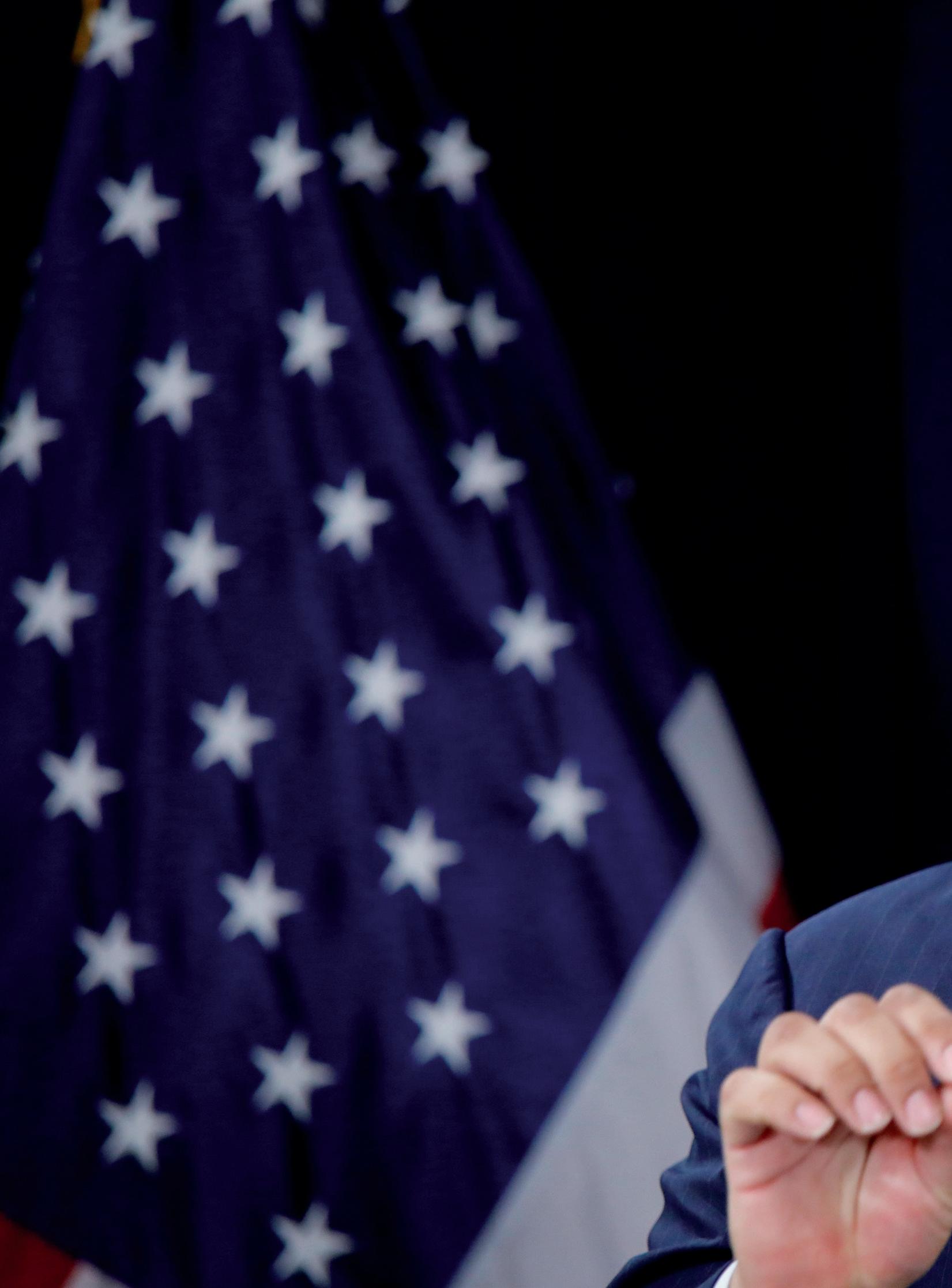 By Patricia Tolson
By Patricia Tolson
 Manhattan District Attorney Alvin Bragg speaks during a press conference following the arraignment of former President Donald Trump in New York on April 4.
PHOTO BY KENA BETANCUR/GETTY IMAGES
Manhattan District Attorney Alvin Bragg speaks during a press conference following the arraignment of former President Donald Trump in New York on April 4.
PHOTO BY KENA BETANCUR/GETTY IMAGES
On a pril 4, m anhattan District Attorney (DA) Alvin L. Bragg Jr. filed a 16-page indictment of 34 felony charges and a 13-page statement of facts against former President Donald Trump for allegedly falsifying New York business records to conceal damaging information regarding an alleged affair with adult film actress Stormy Daniels before and after the 2016 election.
On April 6, House Judiciary Committee Chairman Rep. Jim Jordan (R-Ohio) issued a subpoena to former Special Assistant DA Mark Pomerantz, who played a significant role in Bragg’s criminal investigation of Trump. Pomerantz and Carey Dunne resigned in February 2022 after Bragg backtracked on his campaign promise to seek criminal charges against the former president because of his doubts that there was enough evidence to make the case.
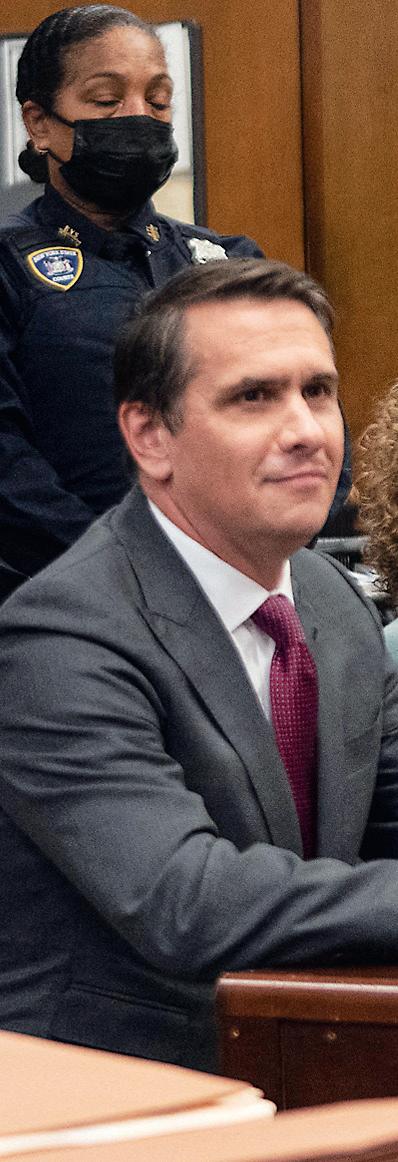
On April 11, Bragg filed a federal lawsuit seeking to block a House Judiciary Committee subpoena issued by Jordan. That same day, U.S. District Judge Mary Vyskocil declined Bragg’s effort.
On April 19, Vyskocil ruled that the deposition could go forward—a decision that was appealed by both Bragg and Pomerantz—before a federal appeals court issued a stay that will delay the testimony, which had been scheduled for April 20.
Bragg is the first prosecutor in U.S. history to bring a criminal case against a current or former U.S. president. But who is he?
Alvin Bragg
According to his official biography, Bragg is a “son of Harlem.” After graduating from Harvard Law School, he clerked for the Hon. Robert P. Patterson Jr. in the Southern District of New York. Bragg also served as an assistant attorney general at the New York State Attorney General’s Office, overseeing the AG’s litigation against the Trump Foundation.
Elected as Manhattan’s 37th DA in November 2021, he’s the first black prosecutor to serve in the position.
Bragg also is a former member of the board of directors of the New York Urban League and the Lawyers’ Committee for Civil Rights Under Law. He was also a Sunday school teacher.
During his campaign, Bragg boasted that he had sued Trump at least 100 times and vowed to pursue a legal case against Trump as a central part of his campaign.
According to Federal Elections Commission (FEC) records, Bragg’s political contributions date back to 2008, when he made a $127.22 donation to Obama for America. From June 2016 to June 2020, Bragg contributed $400 to ActBlue and $250 to Democratic congressional candidate Lucy
McBath. From Oct. 8, 2020, to Oct. 29, 2020, Bragg contributed $90—in increments between $1 and $19—to a conservative PAC, WIN Red. On Sept. 14, 2021, Bragg made a $500 contribution to Raphael Warnock’s Senate campaign.
Juan Merchan
Juan Manuel Merchan—a jurist with more than 16 years of experience on the bench—is the New York County Supreme Court justice who will preside over the case against Trump.
After graduating from Hofstra University School of Law in 1994, Merchan spent many years in the New York County DA’s Office. In 1999, he became deputy assistant attorney general in Nassau County. He went on to serve in the same position in Suffolk County. In 2006, New York Mayor Michael Bloomberg appointed Merchan as a Bronx County family court judge. Merchan currently presides over criminal cases as a justice at the New York County Supreme Court, where he has served since 2009.
This won’t be the first time Merchan has overseen a case involving Trump.
In 2022, Merchan presided over the tax fraud trial that led to the conviction of the Trump Organization’s chief financial officer, Allen Weisselberg. Merchan also is overseeing a criminal case against Steve Bannon, the former Trump aide accused of fraud and money laundering through an organization called We Build The Wall, which promised to help build a wall along the U.S.–Mexico border. Bannon, who was pardoned by Trump before he left office, has pleaded not guilty.
Although rules regarding the campaign activities of judges and judicial candidates are outlined on the American Bar Association website, Merchan has a history of making contributions “to a political organization or a candidate for public office,” all of which are liberal.
According to the FEC, Merchan made three donations totaling $35 through ActBlue—the liberal fundraising PAC powerhouse described as “the home of small-dollar donation”—within two days in July 2020. Of the $35, $15 went to presidential candidate Joe Biden’s campaign on July 26, 2020. The Progressive Turnout Project received $10, as did its subsidiary, Stop Republicans. The mission of the Progressive Turnout Project is to “rally Democrats to vote.” Stop Republicans is “dedicated to resisting the Republican Party and Donald Trump’s radical right-wing legacy.”
To assist in his prosecution of the former president, Bragg has assembled a team of seven prosecutors with extensive experience in fraud and white-collar crimes. But who are they?
Susan Hoffinger serves as Bragg’s executive assistant district attorney and chief of the Investigation Division. After obtaining her bachelor’s degree and graduating magna cum laude from Amherst College in 1985, Hoffinger earned her law degree from Columbia Law School in 1989. From 1992 to 2000, Hoffinger served as an assistant DA in the Asset Forfeiture Unit, the Trial Bureau, and the Frauds Bureau under Manhattan DA Robert Morgenthau. She became the founding partner of the Hoffinger Firm, where she has spent the past two decades as a criminal defense attorney in both state and federal civil litigation.
Hoffinger also has a history of legal connections to Trump. Hoffinger and her legal team won the conviction of Weisselberg and the Trump Organization, the case over which Merchan presided.
FEC records show that Hoffinger has made $8,280 in political contributions to ActBlue and Democratic candidates since 2004. In 2020, Hoffinger made two contributions to Biden for President totaling $500.
Christopher Conroy, a nearly 30-year veteran of the Manhattan DA’s office, serves as an executive assistant district attorney and senior adviser to the Investigation Division.
As a graduate of Fordham University School of Law, Conroy began his legal career in the DA’s Trial Bureau in 1996. He worked in several other divisions, including the Frauds Bureau and the Violent Criminal Enterprises Unit, where he was appointed deputy unit chief in 2006.
In 2011, Conroy moved to the DA’s Major Economic Crimes Bureau, working his way up the ranks for four years to become chief in September 2015.
During his nine-year tenure in the DA’s Major Economic Crimes Bureau, Conroy oversaw several significant cases, including investigations into Société Générale S.A., Standard Chartered Bank, and Unicredit Bank AG.
In 2014, Conroy received the U.S. Department of Justice Assistant Attorney General
Former President Donald Trump (C) appears in court at the Manhattan Criminal Court in New York on April 4. Trump was charged with 34 counts of felonylevel falsification of business records.

Award for Exceptional Service for his work on the prosecution team of BNP Paribas Bank. In 2019, he received the NYC Bar Association’s Thomas E. Dewey Award, presented yearly to an outstanding assistant DA in the city DA’s offices.
According to the FEC, Conroy has made contributions to candidates and political organizations on both sides of the political aisle since 2001. Conroy donated similar amounts to ActBlue and its conservative counterpart, WinRed. He also donated similar amounts to Biden for President and Donald J. Trump for President, Inc. Although three contributions totaling $160 appear to have been refunded— dated Feb. 8, 2021, after the Jan. 6, 2021, Capitol breach—an $80 contribution made on Jan. 1, 2021, five days before the rally, was not.
Catherine McCaw
Catherine McCaw serves as the Manhattan DA’s counsel to the Investigation Division.
She graduated from Harvard Law School in 2009 and clerked for Judge Richard Holwell in the Southern District of New York and Judge Chester Straub of the 2nd Circuit.
McCaw worked in private practice for a few years before joining the DA’s office in 2015, where she worked her way up the ranks.
She has handled several significant cases, including fake heiress Anna Sorokin, aka Anna Delvey, and Mitchell Kossoff, a real estate attorney convicted of stealing more than $14 million from individuals and companies.
Peter Pope
Bragg appointed Peter Pope as Manhattan’s first executive assistant district attorney for gun violence prevention on Jan. 26, 2022.
Pope, a Yale Law School graduate, began his career in 1987 as an assistant DA at the Manhattan DA’s Office, working on violent crimes under Morgenthau. He later served as the deputy of the Labor Racketeering Unit.
He moved from investigating long-term wire and grand jury crimes into investigating organized crime. Among his most prominent cases was the 1992 prosecution of Bonanno crime family capo James Galante on racketeering charges involving the Newspaper and Mail Deliverers’ Union.
In 1995, Pope was appointed inspector general for the New York City School Construction Authority, where he investigated waste and corruption.
In 2000, New York AG Elliot Spitzer tapped Pope as his deputy AG, where he ran the office’s Criminal Division. Pope worked on several high-profile cases there, including corruption investigations into then-State Comptroller Alan Hevesi.
In 2006, Pope became New York State’s director of policy after Spitzer’s successful gubernatorial run.
In 2007, the New York Post reported that Pope played a significant role in efforts to shut down a sex scandal investigation involving Spitzer, being conducted by Attorney General Andrew Cuomo. Spitzer, who had a reputation for shutting down “sex rings,” was identified as “Client 9” with
Prosecutor Susan Hoffinger (C) leaves the courtroom during a trial at the New York Supreme Court in New York on Oct. 31, 2022. Hoffinger and her legal team won the conviction of Weisselberg and the Trump Organization.

the Emperors Club VIP prostitution ring, where he spent about $80,000, NPR reported in 2008. Spitzer resigned in disgrace.
After spending a few years in private practice, Pope returned to the New York AG’s office to serve as the Investor Protection Bureau chief before retiring in 2021. He came out of retirement after Bragg was elected DA to serve in his new role of investigating and prosecuting gun-related offenses, including gun traffickers and illegal sales.
FEC records show that Pope’s high-dollar political contributions date back to Aug. 21, 2011, and have been made to ActBlue and an assortment of liberal candidates.
Matthew Colangelo
Bragg appointed Matthew Colangelo, who graduated from Harvard Law School, to serve as the senior counsel for his office in 2022.
Before that, Colangelo served as chief counsel for federal initiatives and executive deputy attorney general for social justice in the New York Attorney General’s Office, where he worked dozens of cases, including an investigation into the Trump Foundation. He also served as a deputy assistant to President Barack Obama and deputy director of the National Economic Council.
Before that, he served as chief of staff to Department of Labor Secretary Tom Perez for three years and as deputy assistant attorney general for civil rights at the Department of Justice.
Colangelo returned to the department in 2020 to oversee its Antitrust Division, Civil Division, Civil Rights Division, Environment and Natural Resources Division, and Tax Division.
According to an April 7 letter sent to Colangelo, Jordan is seeking his voluntary cooperation in the expanding investigation into Bragg’s “unprecedented indictment of a former President of the United States and currently declared candidate for that office.”
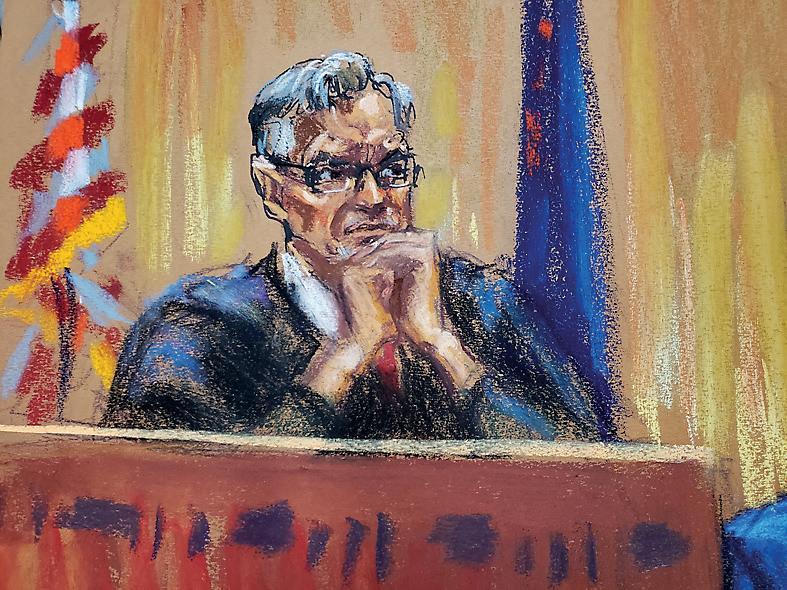
Jordan noted that Bragg hired Colangelo in 2022 “to ‘jump-start’ his office’s investigation of President Trump” because of his “history of taking on Donald J. Trump and his family business.”
FEC records show that Colangelo has contributed $1,042 since 2008, starting with a $400 contribution to Obama for America. Other than a $250 contribution to Todd Litton’s failed congressional bid in 2018, all other contributions went to ActBlue.
Rebecca Mangold became an assistant DA in Bragg’s Major Economic Crimes Bureau in 2022.
After graduating from Harvard Law School in 2008, Mangold became an associate at the private law firm Debevoise & Plimpton LLP.
From 2011 to 2013, she clerked for Judge William Martini in the District of New Jersey. After that, she joined another private firm, Kobre & Kim. Nine years later, she became a partner at the firm and worked on financial fraud investigations. Daily News reported that “Mangold’s notable experience also includes investigating a $1 billion mining hacking conspiracy involving a former Soviet military counterintelligence officer.”
According to FEC Receipts, Mangold made three equal payments of $166.67 to ActBlue on Nov. 7, 2020.
Katherine Ellis
Katherine Ellis began her career at the DA’s office under Cyrus Vance Jr. in 2018, where she served as an assistant DA in Trial Bureau 80. She became an assistant DA in the Major Economic Crimes Bureau in 2021.
After graduating from Columbia Law School in 2014, she joined Cleary Gottlieb Steen & Hamilton as an associate. Before that, she worked as a legal analyst at Goldman Sachs and a paralegal in the Manhattan DA’s office. In 2017, Ellis won the Women in Wealth Management Individual Contribution Award.
FEC records show thousands of small-dollar political contributions from Ellis dating back to 2021. Although there are a few contributions to Win Red and even a few to Trump’s campaigns in 2016 and 2020, the rest were made to liberal PACS and candidates.
Judge Juan Manuel Merchan also presided over the tax fraud trial that led to the conviction of the Trump Organization’s chief financial officer, Allen Weisselberg, in 2022.
Trump coverage reveals how media frame and exclude
 News Analysis By Nathan Worcester
News Analysis By Nathan Worcester
 Former President Donald Trump greets supporters as he arrives at an event at Mar-a-Lago in West Palm Beach, Fla., on April 4.
PHOTO BY JOE RAEDLE/GETTY IMAGES
Former President Donald Trump greets supporters as he arrives at an event at Mar-a-Lago in West Palm Beach, Fla., on April 4.
PHOTO BY JOE RAEDLE/GETTY IMAGES
The indictment o F F ormer President Donald Trump had domi nated the news cycle for weeks, but by April 13, the name
“Trump” appeared nowhere on the front page of Google News.
There and elsewhere, the arrest of 21-year-old Jack Teixeira, accused of leaking classified national defense material, claimed the limited attention spans of those in the American community of journalists.
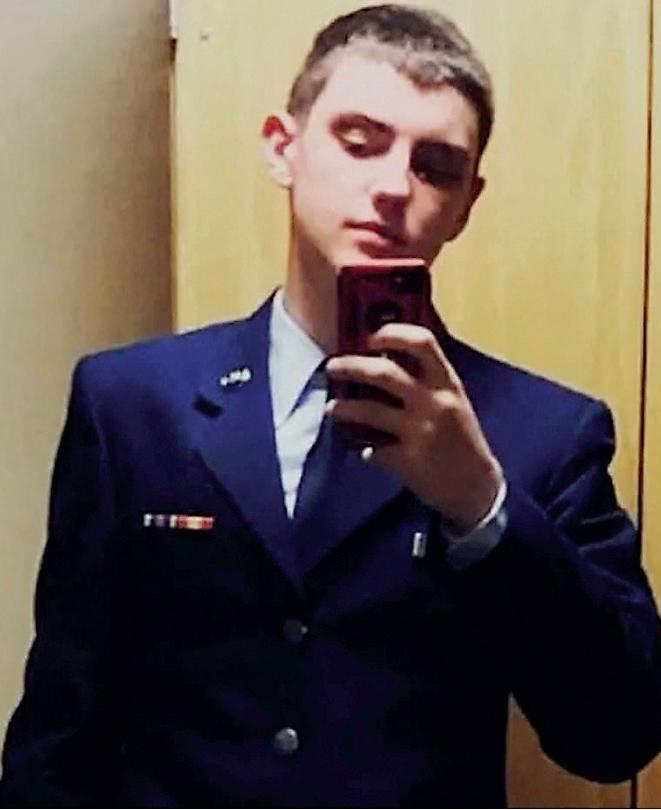

Trump and the indictment didn’t make the very top of The New York Times’ digital front page. Yet, the title of a subsection about a quarter of the way down, “The Trump Investigations,” offers some clues as to how Manhattan District Attorney Alvin Bragg’s controversial case may be recast—namely, as one of many legal quagmires through which the former commander-in-chief must trudge.
Fox News was accused in March of a soft ban on Trump appearing on its channel, yet on April 12, it posted Trump’s first interview since his indictment, which it featured partway down its digital front page. An article on Bragg also made the cut.
The former president was almost a total non-entity on the digital front page of CNN, famously dismissed by Trump as “Fake News CNN.”
It’s part of a noticeable pattern over the past week. Although coverage of Trump has fluctuated, it has general-
ly trended downward. Yet, the legacy media’s “indispensable man” has never fully exited the news cycle.
Kevin Tober, a news analyst with the conservative Media Research Center, has been monitoring coverage of Trump.
His March 28 article, written before Trump’s indictment was released, noted that the four big Sunday news roundtable shows obsessed over that story while ignoring key new stories that could hurt President Joe Biden.
Those revelations included emails from during Biden’s vice presidency suggesting that members of the Biden family sought to downplay coverage of Hunter Biden’s Burisma Holdings board membership in 2015, along with subpoenas from the House Oversight Committee that appear to link the Bidens to payouts from a Chinese energy company.
Tober has a theory about why the indictment has faded from view.
“I think the media looked at what’s in the indictment, and they realized there’s nothing there,” he told The Epoch Times in an April 12 interview.
“Even they are embarrassed to be hyping this,” he said.
Once the indictment was unsealed, legal experts quickly identified numerous flaws. Those issues range from the
way it blends state and federal laws to its vagueness concerning Trump’s alleged second crime.
Yet, even if the media are quietly backing away from a weak case, their powerful megaphone may have served the intended purpose.
Pro-Trump commentator John Doyle argued in an April 7 video that people who don’t follow the news closely will see the former president more negatively on average because of the indictment.
“They’re just going to remember that, you know, every time they turned on the news in the gym, whatever, it seemed like Trump was wrapped up in some scandal, which will just make them more likely to think, ‘Well, they finally got him,’” he said.
The media, Tober said, are “always quick to report on anti-conservative or anti-Republican stories.”
In his view, one of the media’s biggest tricks is omitting or downplaying inconvenient information, sometimes in response to explicit instructions.
He cited CBS News’ ban on the word “transgender” in its coverage of the shooting at the Covenant School in Nashville, Tennessee, as reported by the New York Post.

One useful concept for making sense of the news cycle originated more than a year ago as a spinoff of the “non-playable character” meme—“The Current Thing.”
The Current Thing is often the top story for days, weeks, or even months at a time. And not only are you forced to think about it—you’d better support it or risk paying the social price.
An early example comes from 2012, with the crusade against African warlord Joseph Kony.
More recently, The Current Thing has ranged from COVID-19 to the war in Ukraine.
For many, The Current Thing is becoming harder and harder to escape with each passing year.
“The Current Thing, at a fundamental level, is a distraction, any distraction,” Adam Ellwanger, an English professor at the University of Houston–Downtown, said in an April 14 interview with The Epoch Times. “American society is at a very late stage in its degradation.”
Ellwanger wrote about what he sees as the elite-driven nature of The Current Thing for The American Conservative in 2022.
“Current Thing-ism is about freezing the public gaze on one problem, in the hope that they remain oblivious—or indifferent—to the rest, and thus remain ignorant of the bigger picture,” Ellwanger said. “Because the establishment is thoroughly leftist, the issues
that become The Current Thing are ones that are conducive to advancing the agenda of the political and cultural left.”
For a few days, Trump’s indictment was The Current Thing.

Yet, as Tober noted, the story lost momentum over the following week, though didn’t disappear completely.
The indictment-related stories that did emerge illustrate another powerful
Some argue that The Current Thing is more a product of financial incentives than of political belief. After all, journalists make money from the public’s attention. Why wouldn’t they capitalize on a snowballing story, regardless of ideology?
Despite their legendary self-obsession, media entities themselves might not give you the best answers.
weapon in the media’s arsenal—namely, the framing of a specific story and the latest Current Thing.
On April 11, for example, Bragg’s lawsuit against Rep. Jim Jordan (R-Ohio) dominated many headlines.
Jordan’s original subpoena, the trigger for Bragg’s reaction, hadn’t commanded anything resembling the same amount of attention.
“Framing is very often ideological,” Tober said.
“The media kind of goes back and forth like a ping-pong ball. They follow whatever the new thing is, the new controversy,” Tober said.
This writer ran a test using the most unscientific method possible: a Twitter poll.
In the eyes of those who answered, ideology edges out money in establishing The Current Thing, leaving chance or other factors in the dust.
In fairness, it’s pretty hard to
One of the media’s biggest tricks is omitting or downplaying inconvenient information, an expert says.
imagine that our media present—and police—the latest big stories without taking politics into consideration.
The current Current Thing, Teixeira’s arrest, has been publicized as a national security risk for the United States and a possible justification for expanded government monitoring of social media by the Biden administration.
It comes just weeks after Congress proposed the RESTRICT Act, a putatively anti-TikTok bill that could greatly expand the government’s ability to clamp down on online communications.
The explosive content of the leaks,
and what they reveal about the United States’ involvement in Ukraine, has remained a relative afterthought.

Trump has long had a complicated relationship with the media and their Current Things.
Even as he supposedly “craved media approval,” the real estate mogul and reality show star had a knack for disrupting the press’s narratives while leading the country.
He also captured clicks and eyeballs for legacy and non-legacy outlets alike.
“[The media] just can’t get over their obsession with the president,” Tober said.
Even today, he said, “It’s always Trump, Trump, Trump” on the news.
“We always joke, ‘Well, who’s the president right now?’”
Many Current Things in the past few years have been driven wholly or in part by Trump.
Like other Republican leaders before him, he’s provided a focal point for leftist ire. In some ways, the Trump phenomenon—perpetually seen as an emergency, forever dominating the news cycle, and always demanding a politically safe response—was the most durable Current Thing of the past few years.
Yet, in Ellwanger’s view, Trump has offered Americans a path away from The Current Thing.
“He seeks to move the public’s attention away from The Current Thing in order to see the broader degradation,” he said.
“If the public were to get that broader panorama, they would recognize that some radical alternative is needed to the current establishment. Which, of course, would empower Trump. Therefore, he remains Public Enemy No. 1 according to Current Thingism.”
As of early April 14, Teixeira and the bombshell documents continued to dominate headlines, leaving the man from Mar-a-Lago in the shadows.
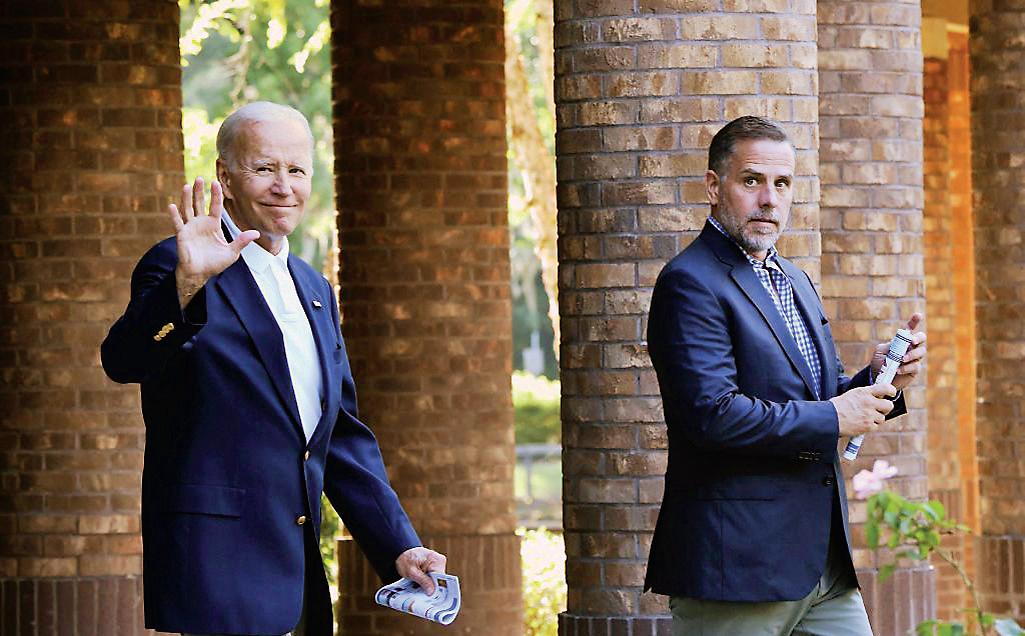
It’s hard to believe that will last, particularly given the unprecedented nature of what has happened with Trump.
The Current Thing comes and goes, but Americans’ polarized responses to the indictment of a former president don’t seem likely to vanish without a trace.
“Current Thingism is about freezing the public gaze on ONE problem, in the hope that they remain oblivious—or indifferent—to the rest.”
Adam Ellwanger, professor, University of Houston–Downtown

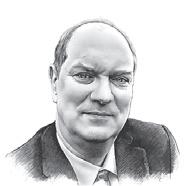


It sounds like NPR can do just fine without taxpayer funding
In the age o F tailored internet news based on individual predilections and tastes, blogs of every specialty and complexion numbering in the thousands, and cable channels catering to whichever way one leans ideologically, taxpayer-financed media organizations have been dinosaurs for decades.
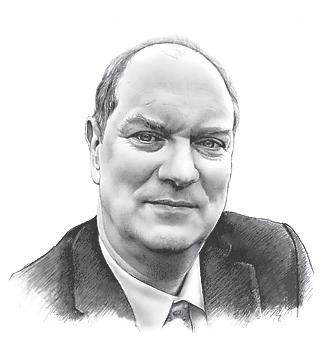
According to the Public Broadcasting Act of 1967, “It is in the public interest to encourage the development of programming that involves creative risks and that addresses the needs of unserved and underserved audiences, particularly children and minorities.” And along came “Sesame Street” and Mister Rogers because, purportedly, it was hurting American children to enjoy watching instead Popeye and Bluto, and Bugs Bunny and Daffy Duck having fights with each other in cartoonland.
More than a half-century later, with nearly 2 billion websites on the internet, and even the poorest Americans across lines of ethnicity and age now owning or having access to a computer or a smartphone, there is no longer any such thing as “unserved and underserved audiences” when it comes to information and entertainment.
Interestingly, the original 1967 law establishing the Corporation for Public Broadcasting made no mention of news or journalism as being among its functions.
Yet 3 1/2 years later, National Public Radio (NPR) materialized, its very first program being “live coverage of the Senate hearings on the war in Vietnam,” an ominous beginning for an institution infamous for its left-wing, albeit soft-spoken, biases. Should NPR be lumped in with state-controlled media in totalitarian tyrannies like North Korea, whose mission is to provide the public with “articles in which they
unfailingly hold the president [Kim Jong-un] in high esteem, adore him and praise him as the great revolutionary leader”?
Obviously not. Nevertheless, in the case of prosperous Western nations, state-funded media can always be expected to be protective of big government and causes of the left.
“Defund @NPR” was Musk’s pithy retort.
The Public Broadcasting Service has followed suit, grumbling, “Twitter’s simplistic label leaves the inaccurate impression that PBS is wholly funded by the federal government.” But the fact that even while in possession of hundreds of millions of dollars of taxpayer booty, PBS and its local affiliates will spend hours-long marathons begging for more money from “viewers like you,” plus various foundations, leaves an impression of, more than anything else, chutzpah.
The British Broadcasting Corporation (BBC), for instance, “is a profoundly influential opponent of nearly everything conservatives believe, with the right forced to accede feebly to the left-liberal consensus,” according to Robin Aitken, who was a BBC on-air reporter for decades and author of “Can We Trust the BBC?” Aitken quoted a BBC news anchor who “described the sense of superiority that working at the BBC confers on its staff. “It’s the whole thing that ‘we know best’ and it’s our responsibility to educate the poor unfortunates beneath us in how things should be.”
This is the context in which Twitter CEO Elon Musk just sparked a firestorm by labeling NPR “state-affiliated media.” NPR withdrew from the social media platform in a huff, and Musk briskly changed the label to “government-funded media,” but while its reporters are free to stay as individuals, NPR has declared it “will no longer be active on Twitter because the platform is taking actions that undermine our credibility by falsely implying that we are not editorially independent.”
Alberto Ibargüen, former PBS board chairman and former publisher of the “Miami Herald,” has touted the fact that the Discovery, History, and National Geographic channels commercialized the PBS model. If they can do it, PBS can too, and should. And give the taxpayers back their hundreds of millions.
Whether the owner is a wealthy mogul who wiggles out of paying very much in taxes, or the state funding itself by picking the pockets of its citizens and promoting the ever-growing leviathan, human nature isn’t suspended within the offices of any journalistic entity. But as in any venture, it helps when the owner has committed his or her own money, and good name, to the enterprise.
Musk may have sounded the death knell for state-funded journalism in America. NPR’s response to Musk’s label included pointing out that its funding from federal agencies, departments, and the Corporation for Public Broadcasting adds up to less than 1 percent of its operating budget, with sponsorships, member station dues, corporate donations, and listeners constituting the bulk of NPR’s funding.
It sounds like NPR can do just fine without taxpayer funding. And people are going to catch on to that truth.
NPR’s response to Musk’s label pointed out that sponsorships, member station dues, corporate donations, and listeners constitute the bulk of its funding.
ANDERS CORR is a principal at Corr Analytics Inc., publisher of the Journal of Political Risk. He is an expert in political science and government.

The US could set military against producers of illegal fentanyl
DeadlY drugs, illegal immigrants, masked men killing hostages, and a failed state whose “president” is reaching out to communist China, the United States’ most dangerous enemy.
This is the anarchy of Mexico today, the result of Beijing’s destabilization of democracies globally, politics in Latin America, and U.S.–Mexico relations.
The stakes have never been higher, as more than 100,000 Americans die annually from drug overdose, mostly from fentanyl and other synthetic opioids. Tens of millions more are at risk, as more than 60 million use illicit drugs.
Some U.S. lawmakers see few immediate solutions other than military strikes on the Mexican drug cartels that produce most of the fentanyl invading the United States and add it to cocaine, heroin, and meth and fake Xanax, Oxycodone, and Adderall. China supplies most of the chemistry, yet Beijing refuses to cooperate with U.S. counternarcotics.
The Chinese Communist Party (CCP) wants to kill Americans. Fentanyl is now the leading cause of death for 18to-45-year-olds in the United States. Almost as many Americans have died from fentanyl as all U.S. soldiers killed in World War II, the Korean War, and the Vietnam War combined.
If Beijing intends for U.S. fentanyl deaths to occur, it amounts to genocide by the U.N. definition.
Mexico is the CCP’s launch pad. The country is a failed state in which drug cartels corrupt high-security officials, including allegedly its FBI chief. Illegal drug dealers in Mexico bring in up to $30 billion annually, so there is plenty for political bosses. The cartels operate military-style forces and control territories that amount to statelets.
A Chinese cartel in Mexico operates a veterinary business in addition to its illegal drug business. Perhaps not coincidentally, large quantities of illegal fentanyl in the United States now have a veterinary tranquilizer mixed in, making it difficult to revive drug users with the primary antidote to opiate overdose, naloxone.
enough to kill millions of Americans.
In 2022 alone, the DEA seized 379 million deadly doses’ worth, enough to “kill every American,” according to DEA Administrator Anne Milgram.
Despite this obviously existential threat to the United States, Rauh said neither Republican nor Democratic politicians have been forthcoming with solutions when his organization contacted them.
Rauh said he wants Congress to declare fentanyl a weapon of mass destruction. He recommends that the U.S. government seize cartel money and supplies, effectively cutting off the flow of precursors from China.
Some argue there is only one reason to mix animal tranquilizers into fentanyl: to kill the customer. There is no good business reason.
A Chinese pharmaceutical company linked to the Chinese cartel, run by the Zheng family, was sued for up to $120 million by one father in Ohio whose son died from a fentanyl overdose in 2015.
The Epoch Times spoke with the father, James Rauh, and learned that he won his case. He said his private investigator had confirmed that the Zheng cartel is operating in Mexico.
Rauh said there is no other use of the fentanyl precursor ANPP than to make fentanyl. Yet companies in China continue to ship it to Mexico without intervention by Beijing. The CCP must know that the cartels take delivery of these precursors from China-based suppliers because the CCP deploys some of the world’s most advanced surveillance systems.
So much fentanyl is smuggled into the United States now that Rauh is concerned that it could be deployed in a terrorist bomb. The Drug Enforcement Agency (DEA), he said, is seizing only 5 to 10 percent of the total fentanyl smuggled into the country, yet what they do seize is
Others want to link economic sanctions and tariffs on Mexico and China to the fentanyl issue. Still others want the U.S. government to designate the cartels as foreign terrorist organizations, which would, at the very least, bring more attention to the threat.
Some Republican congressmen say cross-border U.S. military strikes should target the cartels. Armed drones, fighter jets, or special forces could be used and might save lives, including in Mexico, from fentanyl poisoning.
The so-called president of the failed state south of our border has decried these military options, denounced the United States for criticizing his human rights abuse, and turned to China for “help” in countering fentanyl production. He should have done this long ago. Now Beijing refuses to cooperate, and Andrés Manuel López Obrador’s attempts are too little, too late.
Defending innocent people—including children and first responders who can overdose from unintentional contact with fentanyl—now requires U.S. military force. López Obrador can still prove us wrong by destroying the cartels himself. But he’d better do so quickly, before the bombs go off.
Fentanyl is now the leading cause of death for 18- to-45-year-olds in the United States.
MILTON EZRATI is chief economist for Vested, a contributing editor at The National Interest, and author of “Thirty Tomorrows” and “Bite-Sized Investing.”

Washington begins to consider launching a digital dollar
hulla B aloo over a digital dollar first emerged in 2019, when the People’s Bank of China (PBOC) introduced its digital yuan. Speculation arose that unless the United States responded in kind, China’s yuan would soon surpass the dollar as the world’s premier reserve currency.
The speculation was pointless. There is much more to a reserve currency than a convenient digital exchange mechanism. In recent weeks, the subject has gained new life in response to Washington’s announcement that it is looking to create a digital dollar. Advocates claim that much good will come from it. Others see dangers. Still others hold that the effort is pointless and that the dollar has effectively been digital for years.
The current impetus comes from White House Executive Order 14067, titled “Ensuring Responsible Development of Digital Assets.” According to a White House summary, the investigation will receive full “interagency” treatment to consider “18 technical design choices.”
And the White House isn’t the only source of interest. In Congress, Rep. Stephen Lynch (D-Mass.) has introduced the eCash Act, calling on the Treasury to implement a digital currency. Also, the Federal Reserve Bank of New York has started a 12-week pilot program to test the use of a digital dollar.
With so many options, it is hard to tell what, if anything, might eventually emerge from Washington’s effort. Presumably, like the PBOC’s digital yuan, the Federal Reserve would create dollar accounts for everyone and digitally administer their transactions. Today, the Fed creates reserves for banks, which create and administer the accounts. Some of the 18 choices the White House summary alludes to would keep the banks as
intermediaries. Either way, all these digital transactions would presumably appear on a single Fed ledger.
Aside from offering the United States an answer to the PBOC, digital dollar advocates stress three additional virtues. First, digital currency would enable people and businesses to transfer money more cheaply and easily than they can today. Second, the arrangements would offer access to financial services to 4.5 percent of Americans who today are “unbanked,” as the popular descriptor goes. Third, it would allow Washington an easy way to reapportion cash benefits to citizens—directly and securely—simply by debiting and crediting their digital accounts.
True, Washington can access such information through credit and debit cards, but the authorities must get a court order from an independent judiciary to access those records. A digital system might offer similar safeguards, but the existence of everything on one government-administered computer certainly makes access easier and quicker, and hence more prone to abuse.
Aside from the obvious technical advantages of points one and three, it is not apparent that the digital dollar would make much difference to the “unbanked.” Modern e-banking apps have all but eliminated the trouble and minimums that once kept people from using financial services. A cheaper and easier answer for these people might lie in education and free iPhones for the needy.
Whatever the digital dollar’s virtues, it would also bring problems. Chief among them is the matter of privacy. If transactions all appear on a government computer, the authorities will have easy access to information on each person’s purchases and sales and, accordingly, the ability to use that information against them. No doubt, such an unparalleled surveillance capability is why China has led in this area.
A digital dollar arrangement could also muddle the allocation of capital. Presently, bank lending and the flow of information in financial markets direct financing to what are presumably the most promising investment prospects. But if digital deposits lie with the Fed, then government employees will direct much investment financing. Such an arrangement could easily see investment financing take a political direction. Though politicians and bureaucrats always think they know better, their track record is hardly something to brag about. If the past is a guide, the increased political influence will tend to slow the growth of income and wealth, except, of course, among the politically connected.
Also, it isn’t apparent that the effort is at all necessary. Whatever China’s needs, it should be obvious that the dollar and most other major currencies have long been digitized. Most people today are paid through direct deposits. Tax refunds also arrive that way, and tax payments are automatically withdrawn, as are many bills. Transactions occur quickly and conveniently through credit cards, debit cards, Apple watches, PayPal, and a host of similar schemes. Even foreign currency transactions occur automatically through one or another of such devices. Perhaps a digital dollar would facilitate all this more cheaply and conveniently, but it is neither essentially different from what exists now nor worth risking other drawbacks.
It should be obvious to all that the dollar and most other major currencies have long been digitized.
JPMorgan’s commitment to social justice cost $30 billion
In this Y ear’s annual reports to shareholders, America’s largest banks proclaimed their allegiance to climate activism, racial equity, and other progressive causes, spending billions in shareholders’ money to support this agenda.
Similar to BlackRock CEO Larry Fink’s annual letter, which often pushes other CEOs to get in line with initiatives such as renewable energy, JPMorgan Chase CEO Jamie Dimon’s most recent letter to shareholders declares: “The window for action to avert the costliest impacts of global climate change is closing.”
Dimon called for governments, corporations, and nongovernmental organizations to unite behind a “massive global investment in clean energy technologies.”
“We may even need to evoke eminent domain,” he writes, taking other people’s property where permitting issues or local resistance gets in the way.
Dimon said the bank spent $30 billion on its racial-equity commitment, which includes preferential treatment of “Black, Hispanic, and Latino” suppliers, homeowners, and small-business owners.
Dimon ventured into politics by writing that “we need to find a way to more rapidly reorganize our government for the new world,” calling for the United States to embark on an industrial policy to foster industries vital to our national security, such as “batteries, rare earths, semiconductors, or EVs.”
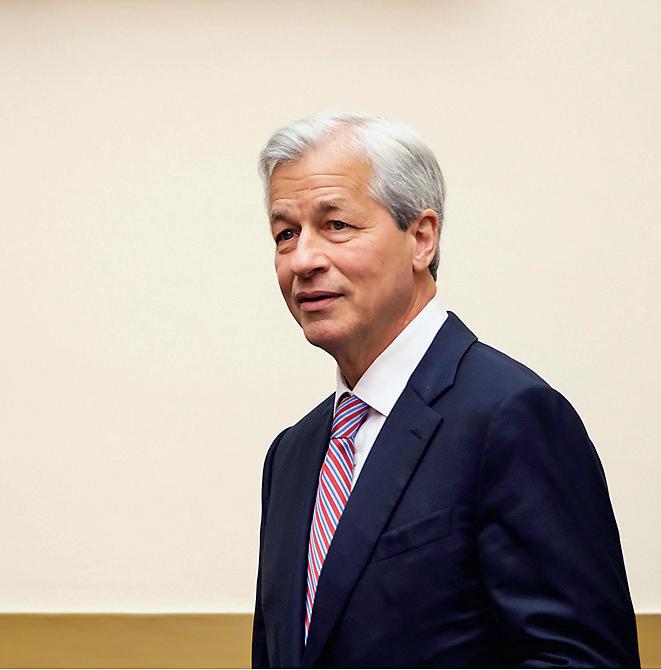
Industrial policy, he stated, means “the federal government, through incentives and policies, drives American industry.”
However, Dimon writes, “rest assured your CEO is a red-blooded, patriotic, free-enterprise, and free-market capitalist (properly regulated, of course).”
Similarly, Bank of America CEO Brian Moynihan’s shareholder letter says the company operates according to the “Stakeholder Capitalism Metrics” de-
veloped by the World Economic Forum, which measure how well a company supports the United Nations Sustainable Development Goals (SDGs).
Stakeholder capitalism means that CEOs prioritize the goals of environmental, social, and governance (ESG) principles, where previously they had focused primarily on enhancing shareholder returns.
Moynihan writes that a transition to “clean energy technologies ... will require a significant investment; some estimates are as high as $275 trillion over the next 30 years.” Accordingly, the bank intends to “deploy $1.5 trillion in sustainable finance by 2030, $1 trillion of which is aligned to the environmental transition and $500 billion to inclusive social development.”

This includes a $2 billion Equality Progress Sustainability Bond, which Bank of America issued in 2022 “to help advance racial and gender equality, economic opportunity, and environmental sustainability.” Like
JPMorgan Chase, Bank of America also provided financing to certain favored races on preferential terms.
Wells Fargo CEO Charles Scharf reported that his company spent “$150 million to advance racial equity in homeownership, with an additional $100 million investment toward this racial equity effort announced in 2023,” and also launched a $60 million program to address systematic barriers to homeownership for people of color” that will create 40,000 new “homeowners of color” by 2025.
While the bank also announced a separate plan called Dream.Plan. Home to help homeowners based on their income, the bulk of its assistance efforts appeared to focus on skin color. In addition, Wells Fargo issued its second Inclusive Communities and Climate Bond, “a $2 billion bond that will finance projects and programs supporting housing affordability, economic opportunity, renewable energy, and clean transportation.”
Citibank CEO Jane Fraser’s shareholder letter states, “Our commitment to advancing diversity, equity and inclusion goes well beyond Citi’s walls,” and includes a $1 billion Action for Racial Equity initiative.
Citibank’s annual report states that it “became the first major U.S. bank to set a recruiting goal for LGBTQ+ candidates” and “set 2030 emissions reductions targets for energy and power lending portfolios as part of Citi’s net zero commitment.”
Meanwhile, the Securities and Exchange Commission (SEC) on March 29 green-lit a shareholder proposal to investigate an alleged “disturbing trend of politicized debanking” and discrimination against conservative and religious customers at JPMorgan Chase. The SEC allowed this proposal to go to a shareholder vote at the bank’s annual meeting in May over the objections of JPMorgan Chase’s management.
Dimon urged organizations to unite behind a massive global investment in renewable energy technologies.ALEX WROBLEWSKI/GETTY IMAGES KEVIN STOCKLIN is a business reporter, film producer, and former Wall Street banker. He wrote and produced “We All Fall Down: The American Mortgage Crisis” and “The Shadow State.”

Even with the Fed pivot, a credit crunch may last for a couple of years
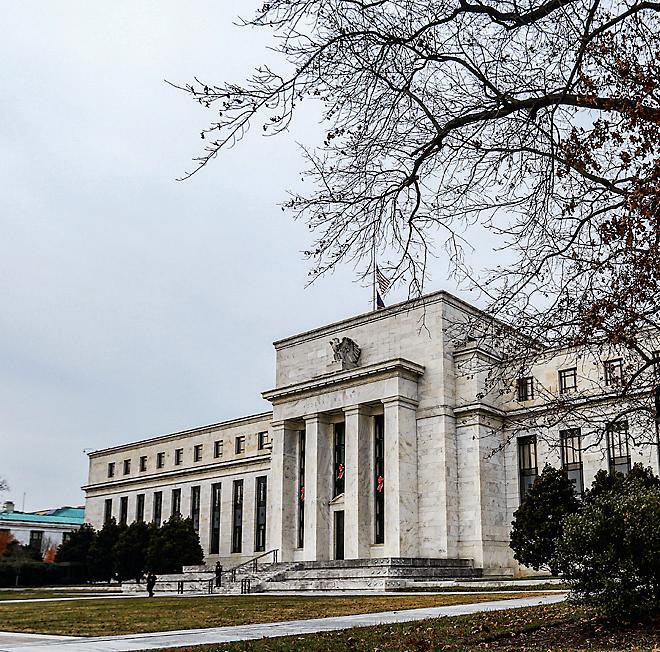
Federal r eserve data show that $174.5 billion of deposits left the banking system in the week after Silicon Valley Bank collapsed. Most of the money went to money-market funds, as Bloomberg shows that assets in this class rose by $121 billion in the same period.
The data show the challenges of the banking system in the middle of a confidence crisis. However, as many analysts point out, this isn’t necessarily the main factor that dictates the risk of a credit crunch.
Deposit flight is certainly an important risk. Many regional banks will have to cut lending to families and businesses as deposits shrink, but in the United States, bank loans are less than 19 percent of corporate credit, according to the International Monetary Fund, while in the euro area, they’re more than 80 percent.
What will generate a credit crunch is the destruction of capital in the asset base of most lenders. The slump in mark-to-market valuations of all asset classes from loans to investments is what will ultimately drive an inevitable credit contraction.
Credit standards have tightened significantly already, and the credit impulse of the economy, both in the United States and the euro area, has deteriorated rapidly, according to the respective Bloomberg indices. Both are below the March 2021 low.
We must remember that tightening of credit standards was already a reality before Silicon Valley Bank’s demise. But the reality check of capital destruction in the financial system’s asset base is far from done.
Startups will most likely see the most severe crunch in financing, as the tech bubble burst adds to the asset base capital destruction in private equity and venture capital firms, which have delayed the required
write-downs all they could and face a sobering reality check. Our internal estimate of capital destruction in the asset base of banks and private equity firms is between a 15 percent to 25 percent wipeout, which is consistent with the average decline in market value over the October 2021 to March 2023 period.
Real estate investments all over the United States and Europe require a significant reevaluation now that real estate has underperformed the market for 18 months, according to Morgan Stanley. The optimistic valuations of real estate and corporate investments in banks’ balance sheets will require a significant analysis and subsequent write-off that will lead to much tighter credit standards and stringent investment conditions.
Capital destruction tends to be forgotten in a world used to constant central bank easing, but it’s likely to be the main source of the strangling of credit to families and businesses, as banks and private equity firms deal with the loss of value and weakening earnings and cash flow from invest-
ments made at elevated valuations and high prices.
The main challenge this time is that capital destruction is happening in almost every part of the lenders’ asset base, from the allegedly low-risk part—sovereign bond portfolios—to the aggressively priced investments in volatile businesses and bull-market valuations of corporate and venture capital investments.
The profitable asset part of banks will likely require important provisions for nonperforming loans, a subject that was raised by the Federal Reserve and the European Central Bank months before the banking crisis. Furthermore, as governments will likely blame the recent collapses on lack of regulation again, it’s extremely likely that new rules will be imposed demanding that banks book large provisions recognizing losses on the loan book ahead of time.
Even if we assume a modest impact on banks’ balance sheets, the combination of higher rates, declining optimism about the economy, and the slump in equity, private investments, and bond valuations is going to inevitably lead to a massive crunch in access to credit and financing.
It’s more than banks. The crunch will come from private direct middle market loans and a decline in highyield bond demand, while institutional leveraged loans will likely fall as access to leverage is more expensive and challenging, and investment grade bonds may likely continue to see strong demand but at higher costs.
The question isn’t when there will be a credit crunch, but how large and for how long. Considering the size of the famous “bubble of everything” and its slow implosion, it may last for a couple of years even with a central bank pivot, because, by now, a reverse in monetary policy may only zombify the financial system.
Start-ups will most likely see the most severe crunch in financing.
2015.
Countries are planning a new global hegemony without Washington
The u nited s tates doesn’t appear to be particularly concerned regarding the global position of the U.S. dollar.
Amid a global secular shift away from the U.S. dollar (theoretical) and U.S. political influence (actual), the sentiment out of Washington is more akin to “What, me worry?”
Mainstream economists in the United States insist that the U.S. dollar is irreplaceable, and the global markets can’t replace the dollar as a medium of trade settlement. It’s certainly difficult, but not impossible.
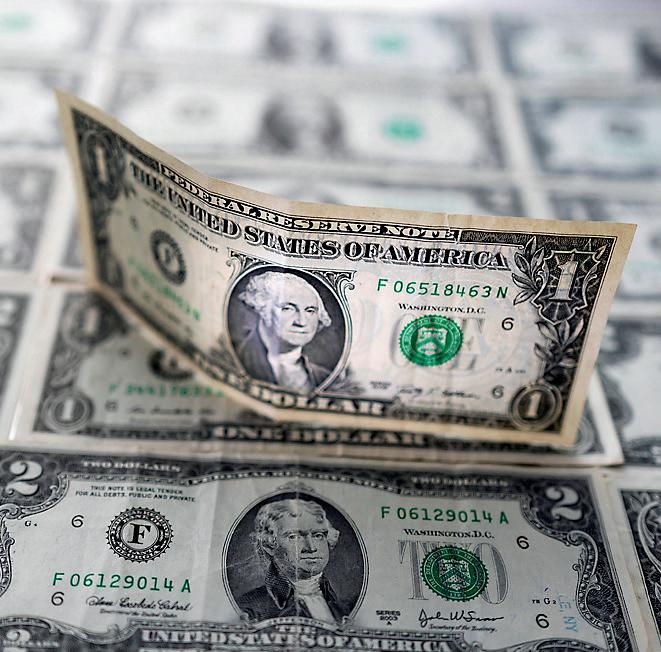
The dollar is a global currency because of the stability of the U.S. economy, the fairness of its political and judicial system, the strength of its financial markets, the creditworthiness of its central bank, and a massive supply of U.S. dollars from decades of running trade deficits in the second half of the 20th century.
But as the U.S. economy lurches from one near-crisis (regional banking failures) to potentially another (stagflation) and President Joe Biden’s political leadership continues to show a weak hand, other countries are beginning to make plans for a new global economic hegemony without Washington.
In late March, China and resource-rich Brazil reached a deal to settle trades in their own currencies, whereas previous trades were all settled in dollars. China has a similar currency deal with Russia and several other nations. Recently, China and France conducted a test trade in natural gas that settled in Chinese yuan. That has followed other currency movements: India and Malaysia, for example, recently began using the Indian rupee to settle trades. Oil exporter Saudi Arabia
leading, is only utilized in a little more than 2 percent of global trade.
Other methods are also problematic. Cryptocurrencies have their own issues. A newly created currency, backed by a basket of commodities, is potentially the most interesting alternative, but just as unlikely. Another alternative is the dollar joining several other global currencies in a basket to create a new “global trade exchange” currency.
has spoken about the desire to diversify away from the dollar, though it has not announced any plans yet.
These are small steps. And, ultimately, replacing one fiat currency with another (such as the yuan) doesn’t appear to be that feasible.
“The idea that the yuan can become a truly internationalized currency ... is a narrative that lacks substance,” George Magnus, the former chief economist at UBS Investment Bank and current economist at Oxford University, wrote in a recent editorial. “It could only happen if China allows the rest of the world to accumulate large claims in yuan.”
To make that feasible, China must run external deficits and permit free outward movement of capital to ensure a proper supply of available yuan, neither of which it would do. The other irony is that the yuan has a soft peg to the dollar to allow the regime in Beijing to adjust its currency to the benefit of its export economy.
The yuan, for all of China’s cheer-
Whatever the outcome, a reduced usage of the dollar would result in higher interest costs and lower global demand for U.S. Treasurys. Over a long enough time period, that would mean reduced U.S. government spending, higher taxes, and higher inflation. A less-effective U.S. dollar also blunts America’s ability to sanction and impose economic hardship on enemy nations.
Wall Street appears to be preparing for a near-term shift.
Michael Hartnett, Bank of America’s chief investment strategist, for example, wrote in a recent note to clients that “U.S. dollar debasement” is now a “new favorite theme.” He recounts the dollar’s double-digit decline since last September, in conjunction with gold spot price above $2,000 per ounce and bitcoin’s rise to above $30,000 as signs that the U.S. dollar will soon enter its “fourth bear market of the past 50 years.”
UBS in late March recommended that its clients add gold, a basket of emerging markets currencies, and the Australian dollar as a hedge against potential U.S. dollar decline.
While it is unlikely to pass, another positive development for gold is the recently Republican-introduced congressional “Gold Standard Bill” to re-peg the Federal Reserve note to gold bullion.
Reduced usage of the dollar would result in higher interest cost and lower global demand for U.S. Treasurys.

hen the neuropathy came and spread through my whole body, I remember staring at the ceiling and thinking, ‘Oh my God, this is it. I’m dying,’” says Jessica Sutta.

In this recent episode of “American Thought Leaders,” dancer and singer Jessica Sutta shared her story of vaccine injury for the first time in public with host Jan Jekielek. In August 2021, Sutta experienced a severe reaction to the Moderna COVID-19 vaccine. Here, she recounts her ongoing struggles with pain and debilitation and explains why she has decided to speak out.
JAN JEKIELEK : It’s amazing to have you here on “American Thought Leaders.” You were a member of the Pussycat Dolls, one of the most successful girl bands of all time, a multi-platinum winner. You’ve had a solo career. Let’s start by summarizing what brings you here.
JESSICA SUTTA: I was severely injured by the Moderna vaccine, and your show is the safest place to speak my truth. So thank you for having me.
MR. JEKIELEK: We should start from the beginning, because there might be a few people out there that aren’t familiar with your dance and singing days. How did you get into the world of music?
MS. SUTTA: I’ve been a dancer since I was 3. I love performing so much. I went to a performing
arts school called the New World School of the Arts, where I focused on dance. Later on, after a knee injury, I switched to theater and got into acting. In Miami, once I graduated from high school, I danced for the Miami Heat and did music videos. I danced with Will Smith.
And then, I was lucky enough to be on a soap opera called “Ocean Ave.” It was really fun. I loved being on set, but I’ll let you in on a little secret: I’m a terrible actress. I moved to Los Angeles to act, and it wasn’t really going so well for me. My first love was obviously dance. Then I was asked to do a public service announcement for Smokey the Bear.
It was my first job in Los Angeles, and it happened to be with Robin Antin, the creator of the Pussycat Dolls, who was the choreographer for this public service announcement. We were putting out forest fires with our top hats and tuxedo leotards in the middle of the forest. It got cut out.
But that’s when I established a relationship with Robin Antin. On set, she said: “I want you to do me a favor. I want you to cut your bangs and I want you to be in the Pussycat Dolls.” That’s how I started in the Pussycat Dolls. It was a cast of about 50 girls. The lead was Carmen Electra. We had a lot of celebrity guests that came on. Christina Aguilera performed, and Gwen Stefani.
When Gwen Stefani came in, she actually got the attention of her label, which was Interscope Records, and
they were very interested in doing something with the group. But they had no idea what to do with it because it was just so wild. It went from 20 girls to six girls, and I stayed with the six. I was part of the pop group the Pussycat Dolls, and it absolutely changed my life forever.
After the Pussycat Dolls, I did some solo work. I did some singing for dance music. I have five No. 1 hits on the Billboard dance club chart, so it’s been a really amazing career. Actually, in 2019, we decided to have a reunion, which was really fun. But unfortunately, COVID stopped that, so it’s no longer happening.
MR. JEKIELEK: COVID changed all sorts of things, and indeed it brought you here. What happened to you?
MS. SUTTA: I’m a law-abiding citizen. I want to do what’s right for the community. I wanted to stop this pandemic and to protect my community, but unfortunately, my reaction to the vaccine wasn’t what I thought it would be, and it changed my life.
It’s been almost two years. Reactions to the vax are not really allowed to be spoken about publicly because it’s so taboo. Maybe it’s rare, but I live it every single day. My point in being here, Jan, since I’m also a fan of your show, is that I would like to speak to the vax-injured and let them know they’re not alone.
MR. JEKIELEK: Thank you for
“My reaction to the vaccine wasn’t what I thought it would be, and it changed my life.”
doing that. It can be really difficult, and I’m familiar with a number of these vaccine injuries. Brianne Dressen, whom I’ve had on the show, is in a similar situation to you, where it’s not obvious on the surface when you look at someone that anything’s different. It might be easy for someone to say, “It’s all in your head” or “There’s some other reason.”
MS. SUTTA: I can tell you about my journey. Three days after the Moderna vaccine, I woke up with an excruciating muscle spasm. As an athlete and a professional dancer, it just felt so different. It felt like I’d broken my rib. I had broken my rib before on tour, so I’m familiar with pain.
I did all the therapies I would normally do: the chiropractor, acupuncture, massage, and rest. Nothing would get this muscle spasm out. That was Sept. 15, 2021. I admitted myself to the hospital, and they ran all these tests and blood work. I did a CAT scan, and come to find out, I was in perfect health.
They sent me home with antibiotics, saying there was a kidney infection. So I just tried the same therapies, but nothing was working. I was to a point where it was really hard to breathe. It felt like burning in my side, and it was incredibly debilitating. I couldn’t even lift my son.
I had just had my son. That was really hard because just even holding him was a struggle. Our trainer mentioned to us that a friend of his in Boston had an adverse reaction to the COVID vaccine and that I need to take a look at something.

So my husband that night showed me a video of 1,000 women having these horrific side effects from this vaccine. I just remember telling my
husband: “Can you turn it off? I don’t want to see this. Come on, no way. This is just a muscle spasm. It’s going to go away.”
Eventually, it got really bad. It was Dec. 7, and around that time, it had spread through my whole body where I just felt so heavy and my eyelids and my legs and my feet and everything hurt. I was still about 50, 60 pounds overweight in August from post-pregnancy, and I had lost that weight by December. I was already back to underweight, which was about 115.
It was crazy because I live in Hollywood and I was getting compliments. It was like: “Wow, you look great. What are you doing?”
I was like: “I’m not doing anything different. I don’t know what’s going on, but it feels like my body’s eating itself.”
I eventually found a massage therapist who finally got the muscle spasm out. Once I got the muscle spasm out, I was lying in bed when all of a sudden I started developing a tremor. The next couple of nights, I started getting involuntary head jerks and leg jerks. It scared me because it felt like: “Oh my God, this is not my body anymore. What is going on?”
When I went to a rheumatologist, she said, “You have fibromyalgia.” I did a whole line of blood tests, but nothing indicated any type of autoimmune disease. Nothing was abnormal. She said, “It’s fibromyalgia, you’ll work through this.” When I tried to do that, it actually made things worse. I was in a yoga pose, and as I was twisting my spine, that’s when the neuropathy started.
MR. JEKIELEK: Very briefly, for those that might not know, what does that mean exactly?
MS. SUTTA: Small fiber neuropathy feels like you’re on fire. In my case, it was in my ribcage and all the way down my spine. It would come in contractions, in waves, and it was so debilitating, and I just didn’t know what to do. I begged my general practitioner to let me see a neurologist.
The first thing he said was, “When did you get the vaccine?” He goes, “I think you had an adverse reaction.” That was the first time I acknowledged it was actually happening to me.
I didn’t want that to be real, because I was just trying to do the right thing. I couldn’t imagine that this could ever happen. I didn’t get a heads-up that this could be a reaction, an autoimmune response. To this day, I still get gaslit to try to make me think it’s not real.
MR. JEKIELEK: This is a common situation. There was even this video that went around of a woman who had very severe tremors. She wanted to show people what could happen, but people were making fun of it. This is a reality in our society today. What’s your reaction to that?
MS. SUTTA: It’s so painful. But as hard as it is when people are gaslighting you and just trying to make it seem like what’s happening is not happening, you have to go back to your truth and know exactly how you feel.
With my fellow vax-injured friends, their experiences are very real, and I’ve seen it firsthand. People who have not seen that don’t have friends who have myocarditis from this. They don’t have friends that
have similar symptoms like I do. When the neuropathy came and spread through my whole body, I remember staring at the ceiling and thinking: “Oh my God, this is it. I’m dying. I have everything I’ve ever wanted in my entire life, and it’s almost over.”
I went to the hospital for the second time, and that was May 3. That was one of the worst experiences of my life. Unless my arm is falling off, I won’t set foot in another hospital again. They didn’t want to believe me, even though I’d been diagnosed by the neurologist from that hospital.
They said: “You have symptoms of MS [multiple sclerosis], but you don’t have MS, so that’s good. In three months you’ll be fine, and this is going to leave your body. Just don’t get the booster. You’ll be OK.”
It’s been two years, so it’s not getting any better. If anything, it’s getting progressively worse. That’s when I started really searching for answers and doing as much research as I possibly could and opening my mind in the sense of learning about everything. I want to hear it all. I want to hear the scientists.
I was really drawn to Dr. Robert Malone. I believe he’s a hero. I’m so grateful for that man. I just did a lot of research and then I came across
React19. I saw Brianne Dressen speak in Congress about her experience, and it was so similar to mine. But what scared me the most was that she was in a wheelchair. As a dancer and as a new mom, that’s terrifying. I’m a fighter, and I’m not going to get there—hopefully not.
She gave me a lot of strength without even knowing it. That’s when I reached out to React19 on Instagram, and I said: “Thank you so much for the work you’re doing. I’m actually vax-injured. I’m terrified to speak out, but God bless you for being on the front line. I know that you’re getting so much hate, but thank you, because it means so much. You’re saving me because I feel like I’m going crazy.”
MR. JEKIELEK: In those early days, there was a lot of pressure to get vaccinated. You mentioned you wanted to do the right thing. Did you ever feel pressure?
MS. SUTTA: Oh yes. I felt a ton of pressure from the media and people in the industry bullying people and saying: “You’re a bad person if you don’t get this vaccine. I don’t want to talk to you. I don’t want to listen to your music.” Looking back, it was incredibly irresponsible for them to do that.
“I was to a point where it was really hard to breathe. It felt like burning in my side, and it was incredibly debilitating. I couldn’t even lift my son.”
But I also believe it was irresponsible of me to stay silent. That’s why when I saw your interview with Bri, I thought, “Yes, I think Jan’s the best one to do this.” Thank you for having me, because I don’t want to talk to anyone else.
MR. JEKIELEK: I’m glad to have you here. What does it mean for your career to go public this way?
MS. SUTTA: It’s probably one of the worst things I could ever do. People get treated poorly in the industry for speaking their truth. But here’s the thing: I’m not angry. I’m definitely sad when I think about it, but I’m not angry. I’m not pointing any fingers. What’s done is done.
I live a solution-based life now. I have a son. I want to have another baby eventually if I can. It’s just time to heal the community. I’m OK with the repercussions that come along with it, because I’m coming from my heart.
MR. JEKIELEK: Censorship is really strong. This is what the Twitter Files revealed. But the other thing they revealed is how you can craft the illusion of consensus, where social media, media, government, and all these different entities are united around the same talking points.
MS. SUTTA: That little box on Instagram says, “For the facts on COVID, go here,” and that really started hurting me. I would try speaking out and I would post things from Russell Brand because he’s really funny with this whole thing, and I would get this box, “For the real truth, go here.” The censorship was just unbelievable.
MR. JEKIELEK: Do you know anyone else in the industry experienc-
ing the same things you are?
MS. SUTTA: I know of a lot of people, like Bethenny Frankel. I don’t know her personally, but she just was on Page Six talking about her autoimmune response, and she’s very angry. I hope I can reach out to her and bring her to React19 so she can get the help she needs.
I know that everyone’s body is their body and everyone has the choice. But I would recommend maybe halting the vax just to reconfigure. Because one death is enough, one child on the football field is enough. I just read that the FDA had pulled some eye drops because they killed one person. For just one person, it was pulled.
Why is it so different with this, with all these young, beautiful kids and athletes in superb health? Why isn’t the vaccine pulled off the shelf immediately? It’s so confusing to me. They need to tell us the truth about what this really is.
MR. JEKIELEK: What has been the impact of this injury on your family’s life?
MS. SUTTA: Thank you for asking that. It’s been really hard for my husband because he doesn’t want to see me suffer. He’s watched this whole journey. He’s been my champion. He’s the one who steered me into knowing exactly what it is.
So I know that’s hard for him, but I also know I’m going to get through this. To my fellow injured, I will say this with confidence: “We will heal. I pray for us every single day that we will heal.”
MR. JEKIELEK: There might be people who have been injured that are watching this, and they may get some
inspiration. What would you say to people in this situation?
MS. SUTTA: First of all, your voice matters, and you are worthy of your feelings. It’s an opportunity to really meet who you truly are inside. What I would say to you is stay strong.
I would also say go to React19. Join the community. There are all these beautiful protocols they’re finding, all these new tests, all these things that will help us heal. You will be heard, and you’ll be loved and accepted.
They’ve just been phenomenal. All the doctors working with React19 have taken me under their wing. They actually care. They hear me.
Bri Dressen is my hero. She’s been a beacon of delight for me and for so many other people. I’m just so grateful for warriors like her who paved the way for the rest of us.
She takes time out of the day when I’m not feeling good and explains to me what’s going on. The whole community has been a godsend.
My voice matters, and it hasn’t mattered for so long. I’ve had so much shame with this. But maybe it happened to me for a reason, and if I can give any inspiration and hope to your viewers, that would mean the world to me.
MR. JEKIELEK: That’s beautiful. It’s such a pleasure to have you on the show.
MS. SUTTA: Thank you, Jan. I just want to commend you for Epoch and your show, for true journalism. We need this in our world so badly, and I’m grateful for all of you, and this is coming from all the truth seekers in the world. We love you guys.
This interview has been edited for clarity and brevity.
It’s not climate change. It’s not raging inflation or even the national debt. The real threat to the United States and to the world is the Chinese Communist Party’s (CCP’s) 100-year plan to defeat America and establish world domination. There’s no urgency in the mainstream media. That’s why “The Final War” had to be made. Anchored by senior investigative reporter Joshua Philipp, and one-and-a-half years in the making, “The
Final War” is a film that is so relevant to current events and so important that we’re offering it to EVERYONE for free. It will answer your questions about the pandemic, the impending invasion of Taiwan, and how the CCP works to keep the United States occupied with at least four global adversaries.
See the film. Know the danger. Be prepared. The final war is already underway.

‘THE
Spring’s arrival brings an opportunity to renew bodies and senses
By Jeff MinickFor some F olks, spring cleaning means stowing away the boots and heavy coats of winter and boxing up items from the closet for a run to the thrift shop. They deep-scour kitchens and bathrooms, wash windowpanes and screens, and run a damp rag along the baseboards.
The energetic throw open the garage and separate the accumulated treasures from the junk or break out brushes and stain and refinish the back deck.
Likewise, after a winter of salivating over seed catalogs and dreaming of tomatoes ripening on the vine, gardeners head outside shouldering shovels and rakes to work the earth. Soon, they’re planting beds of flowers and vegetables, mowing and clipping the lawn, and tending to perennials such as hollyhocks, daylilies, and peonies.

This impulse to discard or refashion the old, and to plant and grow, surely derives from nature itself. After all, spring is a symphony of renewal, with its birdsong, whispering breezes, and melodies of sunlight and soft rains awakening barren fields and hibernating woodlands. The spring cleaning crew and the gardeners are just dancing to the rhythms of the season.
And what if we don’t join these enthusiasts by scrubbing down lawn chairs or digging our fingers into the dirt? The beguiling music of spring can still put us to work—on ourselves. Those breezes that run through the
house can cleanse our hearts and minds; the wildflowers and budding trees can act as gardeners to our souls.
In their article “15 Scientific Reasons Spring Is the Most Delightful Season,” writers at Mental Floss list some of the gifts of the season: the moderate temperatures, the longer days, increased vitamin D delivered via sunlight, and more. They also cite a University of Michigan study that found that being outdoors in the months of April, May, and June improves mood and memory and even leads to more creative thinking.
Clearly, this time of blossom and bloom gives each of us the chance to spiff up our hearts and minds and till our interior gardens.
And here’s the good news: This vernal equinox festival is open to all, free of charge. So how do we enhance our dance with spring?
It’s quite simple, really. We just need to spend time outdoors every day, weather permitting. Many studies show that open air reduces stress, boosts life satisfaction, and helps us sleep better. The increased sunshine produces more serotonin in our bodies, which in turn contributes to greater
positivity and overall happiness.
Taking evening strolls, exercising outside rather than driving to the gym, or even just sitting on the porch or stoop bestows these vitamins of spring.
It also helps to keep in mind the ancient Greek mythological figure Persephone. During the cold months, she was queen of the Underworld, but spring released her from this prison, and she became the beloved goddess of agriculture, fertility, and growth. Recollecting this myth should inspire us to escape the iron bars of our own cold weather confinement and breathe in the fresh air and sunshine.
Finally, slowing our pace to enjoy the sights, sounds, and smells of spring can lift our spirits, allowing us to entertain future hopes and possibilities and to catch the season’s spirit of fun and festivity.

“Spring is the time of plans and projects,” Leo Tolstoy wrote in “Anna Karenina.”
Comedian Robin Williams took a different slant: “Spring is nature’s way of saying, ‘Let’s party!’” Both are valid viewpoints that can walk side-by-side.
The grand ball of spring has commenced. Let’s join the dance.
Slowing our pace to enjoy the sights, sounds, and smells of spring can lift our spirits.
Just 12 miles long and 34 square miles in size, the beautiful, petite island of St. Martin is shared by the French and the Dutch, under a treaty signed in 1648.

WITH A LOCATION overlooking the Pacific Ocean, this Malibu beach house is a sleek, stylish residence that exemplifies the California lifestyle. 70
OPERATED BY FRIENDS sharing a passion for farming and food, Hand Hewn Farms in Ohio offers a variety of workshops teaching practical pasture-to-plate skills. 75
THIS SELECTION OF ADULT summer camps makes it easy to relive childhood memories, or to finally have a chance to go to sleepaway camp. 76
 By Bill Lindsey
The very airy living room’s glass walls provide an ideal place for the owners and guests to gather and mingle as they enjoy an unobstructed view of the beach and the ocean.
By Bill Lindsey
The very airy living room’s glass walls provide an ideal place for the owners and guests to gather and mingle as they enjoy an unobstructed view of the beach and the ocean.
Man Y o F the B each F ront homes in Malibu, California, are owned by movie stars, but in this case, it’s the home itself that’s the star. This two-story, 3,502-squarefoot, four bedroom, three bathroom residence on a .15-acre ocean frontage lot served as the home of Robert De Niro’s character in “Heat,” filmed in 1995.

Located within Malibu Cove Colony, where access is controlled by a guardhouse which is manned 24/7, the property combines privacy for the owner with unobstructed views of the beach and the ocean beyond. Designed by Ron Goldman, the home’s exterior is clean and simple, finished in bright white. While the entry side of the home has no windows, the side facing the beach opens wide to let in the sunshine.
Stepping inside, the owner and guests are greeted by wood flooring, soaring ceilings, and an open floorplan that allows a clear view of the beach from all rooms. Large glass roof panels provide natural lighting during the day


and a view of the stars after dark. Stairs lead up to the second floor, with the kitchen and living room located to the left. The kitchen features a central island with a grill and a pass-through to a bar-style casual dining station and the adjacent dining room, which is set several steps down from the foyer level. Opposite the dining area is the airy living area, with ample room for watching movies to one side and a gathering area on the other in front of a fireplace. This section of the home has glass walls that open onto the beach, and also to a completely private open-air courtyard, which in turn has stairs leading to the upper level.
On the second floor, the bedrooms are equipped with floor-to-ceiling glass walls that open to bring in the ocean breezes. The master bedroom features a desk facing out over the ocean.
Throughout the home, the walls are sized to display oversized art, giving it the atmosphere of an art gallery. Notable features include a two-car garage, solar panels, and a Tesla EV charging system.
• 4 BEDROOMS
• 3 BATHROOMS
• 3,502 SQUARE FEET
• 0.15-ACRE LOT
NOTABLE FEATURES
• BEACHFRONT
• SOLAR PANELS
• TESLA EV CHARGER AGENT
JANE
jane@janedorian.com

Blink, and You could easilY miss it. Driving from south to north, you’ll simply see a sign welcoming you to the “French side,” and from north to south, the “Dutch side.”

Yes, both are a paradise, all blue water and white-sand beaches and swaying palms. But the cultures of those two European nations— far away across the Atlantic—here mix together with local influences and others that came through on the trade winds over the centuries.
It all makes tiny St. Martin a rather fascinating place. Located in the Leeward group of the Lesser Antilles, this little island holds a Guinness World Record. With just 33 square miles of land area, it’s the smallest inhabited island in the world to be shared by two different nations.

Most trips here begin on the Dutch side, whether you arrive by sea or air.
If it’s the latter, you land at Princess Juliana International Airport, which has become something of a YouTube phenomenon. Opened in 1943, it quickly developed into one of the Caribbean’s busiest airports. The runways sit just beyond Maho Bay, and big planes buzz low on approach, just over Simpson Bay. The jets of those departing blast the beach.
It’s an irresistible opportunity for people to gather, phones in hand. When the aircraft swoop down for landing, they’ll film those huge wide-body planes descending just above the beach, seemingly close enough to touch. On take-off, the audience clings to the perimeter fence, hanging on as the planes rev up for their fast trip down the runway.
But on this visit, I arrived in Philipsburg by sea, rolling in on a cruise ship. I walked down the pier, passing through the small cluster of bright, colorful shops set up just to service visiting vessels. Then, I took a 10-minute ferry ride across Great Bay to the bustling capital of the Dutch side, set on a broad crescent of beach some two miles long.
It was Christopher Columbus who gave the island its name on St. Martin’s Day in November 1493. The Dutch arrived in 1631. Sitting halfway between their colonial possessions in North America and Brazil, it was a desirable spot for them to set up a colony. The French, British, and Spanish also established communities, but it was just the Dutch and French that remained.
37 white
BeforePeter Stuyvesant governed New York, he fought in a battle for St. Martin. St. Martin has sandy beaches. SAINT MARTIN (France) SINT MAARTEN (Netherlands) Marigot Philipsburg
In 1648, the governors of these two nations signed the Treaty of Concordia, which formally divided the island. The Dutch ended up with just 16 square miles of territory, the French with 21 square miles.
The French side really feels like France— Marigot, the main town, could be some small village nestled along the Cote D’Azur. Stroll along, and you’ll find small galleries run by artists who grew tired of the rainy Parisian winters and transplanted to these sunnier climes. Also, haute cuisine, prepared with classic French methods, but with fresh seafood brought in by fishermen just today.
And everywhere, both here and in the fishing village of Grand Case, where restaurants overhang a long stretch of beach, are the famous “lolos.” Simple, delicious, open-air grills serve up Creole and Caribbean-spiced meals for a bargain price; or Johnny cakes and goat stew and garlic shrimp, plus lobster and chicken and ribs. Paired with one-dollar beers, heaped onto paper plates at picnic tables. Perfect.
On the Dutch side, you’ll find something else entirely. And don’t expect any windmills, either. In contrast to the peace and serenity on the French side, Philipsburg bursts with energy.
On my most recent visit, I disembarked the ferry and strode the length of the waterfront. Waterfront bars boomed out happy music
and offered deals on deck chairs and buckets of beer. I snapped photos of the blue water, walking out onto a pier for a view back on the grand sweep of the beach. In a couple of places, random people stopped me in the street for a chat or a fist bump. “Where are you from?”
“What are you doing?” “We’re glad you’re here,” they told me.
Front Street offered all sorts of duty-free shopping, and I popped into a couple of spots before finding a small museum on a palm-lined side street. It’s a simple place but, through straightforward displays, gives a nice introduction to all things about the Dutch side—from geology and biology to history and politics.
On my way out, I had a quick chat with the curator, Patricia.
“People come here for the sun and the beach, and that’s great—but they need to know that there’s more to the island than that,” she told me. I asked what she hopes people will take away. She replied, “The friendliness, the welcome, the warm embrace.”
As I retraced my steps back to the ship, I had certainly felt that, richly. And I vowed to stay longer next time. Long enough, at least, for some Johnny cakes and a bit of goat strew, fresh from the lolo.
Fly: In addition to nonstop flights from Paris and Amsterdam, Princess Juliana International Airport (SXM) connects the island with a number of North American cities.

Getting Around: Small, privately owned buses connect the main towns. Rental cars are also available, as are taxis.
Stay: Sonesta Ocean Point Hotel is an adults-only, allinclusive, all-suite enclave.
Take Note: U.S. dollars are accepted everywhere. And if you don’t speak Dutch (or French), don’t worry— everyone speaks English.
Hand Hewn Farm’s hands-on butchering and charcuterie workshops are bringing back traditional skills and building community

 By Ryan Cashman
By Ryan Cashman
EverY hog Butchering performed by Doug Wharton and Andy Lane of Hand Hewn Farm begins the same way. They start early in the morning, when the mist still clings to the grass. There is no chaos, none of the nervous energy that makes both hog and butcher unsteady. This also settles the nerves of their students, many of whom have never witnessed the butchering of a farm animal.
“Taking the life of the pig should not be done lightly,” Lane said.
To prepare for that moment, Wharton and Lane have a practiced ritual. A handle of bourbon is set on the table. Shots are poured and passed around. Then, the poem “For the Hog Killing,” written by Wendell Berry in 1979, is read aloud.
A moment of silence follows, and the bourbon is consumed. Finally, the hog is dispatched with a single shot.
“People come to these classes from various backgrounds and with differing worldviews,” Wharton said. “The poem is inadvertently unifying.”
Lane laughed: “We used to joke that we’ll know we’ve made it when Wendell Berry recites it at one of our events.” Berry did just that at their 2022 and 2023 workshops in Berry’s own Henry County, Kentucky.
Wharton and Lane, who along with their families have been homesteading since 2009, began their hog butchering journeys in 2014.


Hand Hewn Farm hosts multi-day, whole-hog workshops at farms across the country, including their own, throughout the year. Some events offer different access-pass options for attendees interested in only the slaughter and butchery portions, or only the charcuterie and cookery portions.
Learn more and see their upcoming events schedule at HandHewnFarm.
com
“Back in the day, butchering was just another thing people did,” Wharton said. Lane chuckled as he remembered how his grandmother gave them a hard time for only butchering two hogs in one weekend.
Granted, Grandma Patterson, whose farm in Tuscarawas County, Ohio, serves as Hand Hewn’s base of operations, wasn’t going into minute detail to teach these skills to students.
Feeling the need to share the knowledge they’d come to learn and love, Lane, a former art teacher, and Wharton, a former construction superintendent, decided to start holding workshops, first locally, then traveling to farms across the country.
Butchering is one part of their whole-hog experience; the second is where they found their
“We’ll get people who are curious about curing meat in their apartment,” Lane said. “They like the culinary usage and the romantic appeal of having meat hanging in your kitchen.”
But teaching these skills is “just the tip of the iceberg,” Wharton said. “The real work has been reminding people that we need one another.”
The idea that knowledge can be accessed—and grown—through community lies at the core of Hand Hewn’s philosophy.
“People are capable,” Lane added. “They just need to see it happen and have the confidence to know that they can go home and do it.”
Nights spent with friends around a campfire, singing and roasting marshmallows, are the stuff great memories are made of.

The joY s o F summer camps are known to pretty much everyone, including those who didn’t attend one as a child. But rather than relying on nostalgic memories—or if you never went—why not go now?
It’s easy to assume all the aspects of summer camp, from sleeping in cabins and campfire sing-alongs to canoeing, rock climbing, arts and crafts, and more are only available to kids, but the reality is that a growing number of “camps” are set up strictly for adult-age campers. These range from traditional summer camps to band camps, boat-building camps on Martha’s Vineyard, and even an adult version of Space Camp.
Below are several examples of summer camps created specifically for adults. Get ready to make s’mores!
The very apt motto of Club Getaway located in Kent, Connecticut, is “unleash your inner child.” Marketed as a way for grownups to escape from the restrictions of the city, this 300-acre lakeside facility has a wide variety of traditional summer camp daytime activities such as rock climbing on actual rock faces, obstacle courses, swings suspended from huge trees, climbing walls, and zip lines that whisk brave campers along at up to 40
miles per hour.
Other activities include Crazy Olympics, organized sports, water skiing, wakeboarding, tubing, canoeing, water volleyball, and clambering over and across an array of inflatable obstacles. After dark, the activities switch to themed dinners, DJ dance parties, karaoke, and, of course, s’mores parties around a roaring campfire. To complete the summer camp experience, campers stay in rustic cabins.
Camp Wandawega, located on Wisconsin’s Lake Wandawega—“the lake nobody has ever heard of”—is another traditionally themed camp set in the deep woods around a lake, but one with a very unique and varied past. Originally created as a speakeasy during Prohibition, it later evolved into a brothel, then a home for displaced Latvian priests, and finally a summer camp catering to adults and families. Activities include archery, tomahawk throwing classes, fishing, hiking, and nightly campfires.
Campers at WoodenBoat School in Brooklin, Maine, spend their days mastering the skills required to craft a boat by hand, taught by artisans with decades of experience. The 60-acre waterfront facility is a five-hour drive from Boston. Campers choose from courses in which they build a kayak, a canoe, a dory, or even a McKenzie River Drift Boat from start to finish. With other courses focusing on diesel engine maintenance, essentials of fine woodworking, blacksmithing for boatbuilders, building a radio-controlled sailboat, and navigation basics, it’s no surprise that many campers come back year after year to learn new skills. Campers stay in cabins or home-style housing.
No roundup of summer camps would be complete without a band camp, such as Symphonic Band Camp at Interlochen Center for the
Horseback riding is a staple of summer camp life; some Western U.S. adult camps gear their programs around equestrian activities.


Kayaking down a roaring whitewater river is a thrill for campers of all ages.

Adult campers will enjoy lazy days spent fishing on the camp’s lake.

The very apt motto of Club Getaway, located in Kent, Connecticut, is ‘unleash your inner child.’Rock climbing can be a bit scary at first, but many learn to love it for the confidence it inspires.
Arts in Michigan. Groups of 80 adult campers participate in programs supervised by the camp’s professional faculty. Activities include daily ensemble rehearsals, faculty/camper rehearsals, and the opportunity to take part in performances. Campers dine in the Stone Cafeteria and reside in the on-campus Stone Hotel.
Located in Huntsville, Alabama, Adult Space Academy is an adventure in which campers immerse themselves in all things space-related. Activities include learning what it takes to be an astronaut on the multi-axis trainer, constructing and launching a rocket, designing a heat shield, and taking part in a realistic simulated space mission. Campers can even participate in an optional underwater astronaut training program.
Campers who yearn for an authentic American West experience should consider Sorrel River Ranch, on 240 acres of wilderness outside of Moab, Utah. Campers stay in rustic cabins, lulled to sleep by the Colorado River passing by a few feet away. Activities include horseback rides, rock climbing, rafting, UTV tours, mountain biking, hot air balloon rides, pickleball, swimming, and much more. After a long day playing, campers can indulge in a massage at the spa, followed by a cocktail and a gourmet meal.

Be a kid again
Another camp with welcome creature comforts is Summercamp, operated by Martha’s Vineyard Hotel in Oak Bluffs, Massachusetts. In operation since 1879 and recently renovated, it has 95 comfortable rooms featuring internet access, 43-inch televisions, and lavish bathrooms. With the largest marina on Martha’s Vineyard and 318 nearby rustic gingerbread cottages, campers can go sailing, play ping-pong and Twister in the hotel’s game room, or grab a snack at the Camp Canteen. Later, they can use a bike to explore the island, visiting the nearby Jaws Bridge connecting Edgartown and Oak Bluffs, where some of its namesake’s shark attack scenes were filmed. Unlike most summer camps, Summercamp is dog-friendly, with well-behaved best friends welcome.
Summer camp—it’s not just for kids!
Traditional camps offer all the iconic activities of canoeing, archery, and campfire singalongs, but with much better meals and a cocktail hour.

2
Campers can stay in rustic cabins like the ones they remember from childhood, or ones operated from resort-style hotels, where every room has a big, soft bed, a lavish bathroom, and internet access.


3
The musically inclined can take part in programs designed to hone individual and ensemble skills, under the supervision of professional musicians.


$435
Inspired by man’s fascination with space, the StarWalker line of fine writing instruments now includes this precise Fineliner, created to showcase penmanship in an elegant yet practical manner. The trademark cap features a blue dome resembling the Earth as seen from space, emerging above the lunar horizon. Platinum-coated fittings perfectly accent the precious black resin barrel and cap.
$393.36
Those who enjoy using a soft 4B lead pencil for sketching or jotting down notes will appreciate this unique device that transforms a wood pencil into a very elegant writing instrument. The platinum-plated cap protects the point of the magnumsized pencil and incorporates a sharpener, and the platinum-plated accent at the other end houses an eraser. Magnum pencil and eraser refills are available.
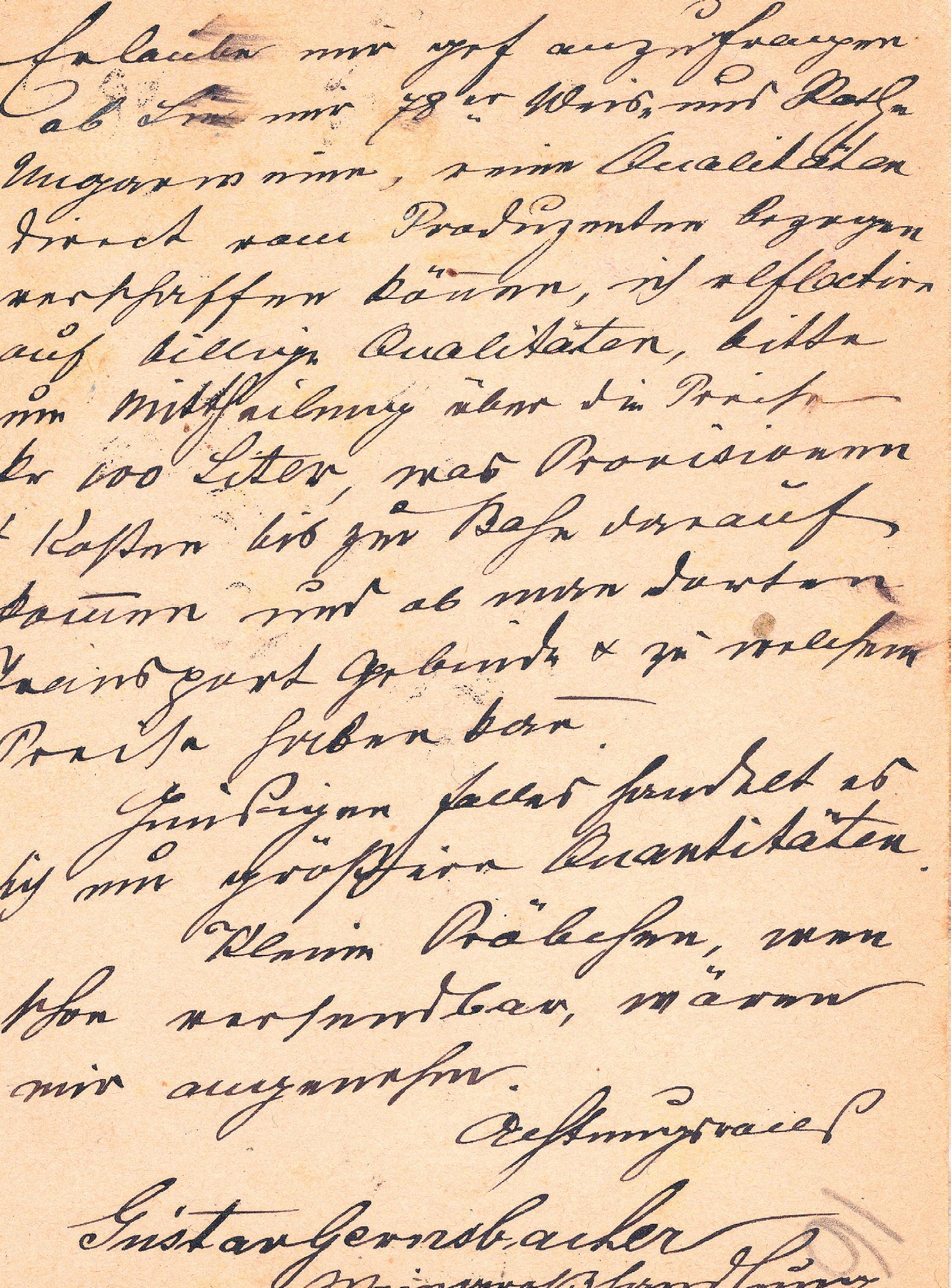
CARAN D’ACHE ECRIDOR
VENETIAN ROSE GOLD BALLPOINT

$280
Featuring a hammered guilloché texture, this sleek ballpoint pen made by artisans in Switzerland provides a pleasant haptic sensation when in use and reflects light in a visually appealing way while at rest. The hexagonal shape ensures a firm grip for precise control. Packaged with a black leather case in a presentation box, it would make an ideal gift for a student, employee, or loved one.

$5,678
This elegant fountain pen, crafted from machined steel and aluminum, features an 18-karat gold, 8 mm nib engraved with the James Bond 60th Anniversary logo. It’s accompanied by two refillable brass cartridges resembling 9 mm ammunition, which in turn can be refilled using the included device. In addition, 007 cufflinks and a journal are included. Only 380 sets will be offered, making it a collectible as well as fun.


$240
Rollerball pens glide across paper in a smooth, sensual manner that enhances penmanship and makes signatures a form of artwork. This example takes it a step further by securing the ink source in a glittering, ruby-red lacquered, diamond-shaped, 18th century-style guilloche engraved housing that feels as good as it looks. The gold-plated clip, cap, and trim complete the elegant design.
This is the first major history of American glider pilots. It opens with combat gliders and their introduction into the U.S. Army Air Forces. The heart of the book looks at the combat gliders at Sicily, Normandy, and Southern France, and in specific campaigns: Operation Market Garden, the relief of Bastogne, and Operation Varsity. The book’s focus is the men who flew the gliders, following them through training, deployment overseas, their airborne arrival at the battlefield, and their experiences in combat.

OSPREY PUBLISHING, 2023, 288 PAGES
The book’s subtitle says a great deal. The work argues that children have rights, too, and that often adults fail to recognize children’s feelings about marriage and family. Citing both data and anecdotal evidence, the authors show that most children yearn for the love of their biological parents, are damaged by broken homes and irregular adult relationships, and should be given much more consideration in matters such as divorce. It’s a moving argument for traditional—and loving— marriages and families.
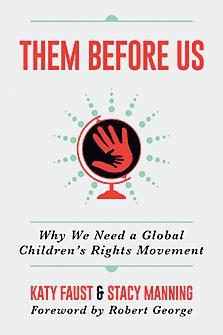
POST HILL PRESS, 2022, 304 PAGES
love to hear from you. Let us know at features@epochtimes.com
Grover Cleveland is the quintessential topic of political trivia: the only president to serve two separate terms, the only president to be married in the White House, and the only president to undergo a secret surgery at sea during his presidency. Troy Senik, however, digs deeper into Cleveland’s life and presents a politician Americans would most desire: an honest and principled one. This biography of the 22nd and 24th president is diligently detailed and full of Senik’s sharp wit.

THRESHOLD EDITIONS, 2022, 384 PAGES
 By Paul Galdone
By Paul Galdone
Convinced that the sky is falling, Henny Penny runs off to tell the king. On her way, she is joined by such characters as Cocky Locky, Goosey Loosey, Turkey Lurkey, and Ducky Lucky, until finally, they encounter Foxy Loxy, who lives up to his sly reputation. Spoiler: It doesn’t end well for the band of doomsayers. The fox on the other hand ...
CLARION BOOKS, 2013, 40 PAGES
is arguably the most notorious spy in British history. The MI6 agent spent two decades betraying his country to the Soviets. Macintyre tells the story through the lives of Philby and his close counterparts: the American James Jesus Angleton and Philby’s best friend and fellow MI6 agent, Nicholas Elliott. It’s a powerful telling of the true story of how Philby successfully deceived his country and his closest friends. It’s full of intrigue, mystery, and history during the height of the Cold War.

CROWN, 2015, 384 PAGES
‘The

Some may recommend this as a book for children, but don’t be fooled. The author of “The Wind in the Willows” does indeed explore childhood, but he sets his sights on a grownup audience. Based in part on the circumstances faced by Grahame and his siblings, these charming stories center around five orphaned children living on a large property in the English countryside. Through their adventures and emotions, he evokes a children’s world of nature and imaginative play that few writers can match.
SEAWOLF PRESS, 2020, 168 PAGES
This week, we feature an important biography of an undervalued president and a lucid argument for putting children’s welfare before adult desires.
This week, we feature a wholesome animated-fantasy TV series and a new drama about a highly inspirational figure in the world of boxing.
This biopic follows the life of legendary boxer “Big George” Foreman—beginning with his troubled childhood growing up in poverty to his amateur boxing days, Olympic gold, and eventual professional career as a heavyweight knockout artist. It also covers his near-death experience and ordination as a Christian minister. This rags-to-riches story is one of the better biographical sports dramas out there. Plus, it’s about an American legend who used his Godgiven gifts to turn his life around and become an inspiration to others.

BIOGRAPHY | DRAMA | SPORT

Release Date: April 28, 2023
Director: George Tillman Jr.
Starring: Khris Davis, Jasmine Mathews, Sullivan Jones
Running Time: 2 hours, 9 minutes
MPAA Rating: Not Rated
Based on a popular book series, this ongoing TV show follows the adventures of three siblings—Janner (Alkaio Thiele), Tink (Griffin Robert Faulkner), and Leeli (Romy Fay)—as they travel through the lands of Aerwiar. However, while on their journey of self-discovery, they have to face the insidious Fangs of Dang. This adventure series is a breath of fresh air. It sports a charming animation style and top-notch voice acting. As its

Where to Watch: Theaters A GOOFY,
When cowboy Pat Brennan (Randolph Scott) loses his horse, he hitches a ride with a stagecoach carrying newlyweds. Soon,
a band of vicious bandits kidnaps them, led by ruthless killer Frank Usher (Richard Boone).
This excellent Western stands head and holster above similar
fare—mainly due to its well-wrought script, imaginative cinematography, and solid, nuanced acting.
WESTERN Release Date: April 15, 1957
Director: Budd Boetticher
Starring: Randolph Scott, Richard Boone, Maureen O’Sullivan

Running Time: 1 hour, 18 minutes
Not Rated
Where to Watch: Plex, Tubi, Apple TV
success grows, it proves that there’s a massive market out there for wholesome family fare.
ANIMATION | ADVENTURE | FANTASY
Release Date: Dec. 2, 2022
Creator: J. Chris Wall
Starring: Kevin McNally, Jodi Benson, Kellen Goff
Running Time: 30-minute episodes
MPAA Rating: TV-Y7
Where to Watch: Angel Studios

Newcomer at Pacific Tech University
Mitch Taylor (Gabriel Jarret) is quite a science genius at 15 years old. At first, he doesn’t get along with fellow science whiz Chris Knight (Val Kilmer), but the two eventually begin working together on a groundbreaking laser. However, will their professor use their genius and their project responsibly?
Underneath some of the crude humor, this film is a highly entertaining ’80s romp
with razor-tongued dialogue, ridiculous situations, and a nostalgic soundtrack.
COMEDY | ROMANCE | SCI-FI
Release Date:
Aug. 7, 1985
Director: Martha Coolidge
Starring: Val Kilmer, Stacy Peralta, Daniel Ades
Running Time: 1 hour, 48 minutes
MPAA Rating: PG
Where to Watch:
Vudu, Apple TV, Redbox

Exquisite beauty from the heavens, profound wisdom from dynasties past, timeless legends and ethnic traditions all spring to life through classical Chinese dance, enchanting live orchestral music, authentic costumes, and patented interactive backdrops. It is an immersive experience that will uplift your spirit and transport you to another world.
Join us for a night filled with courage and wisdom, light and hope...

I’ve reviewed about 4,000 shows, and none can compare to what I saw tonight.”
—Richard Connema, Broadway critic“A fascinating insight into what China’s culture used to be and what I hope one day will be restored to China.”
—Edward McMillan-Scott, former of the European ParliamentVice-President
“I encourage everyone to see and all of us to learn from.”
—Donna Karan, creator of DKNYRegardless of the reason you’re traveling by air, be it for business or pleasure, spending time in close proximity to throngs of strangers calls for a specific set of manners.
 By Bill Lindsey
By Bill Lindsey
When the agent at the counter has to deal with rude customers ahead of you in line, treating that person to a warm smile and a show of respect just might make his or her day. Like flight attendants, ticket agents can’t accept cash tips, so show your appreciation in the form of a smile and patience. Upon arriving at the airport, if a curbside baggage handler assists with heavy luggage, hand him a few dollars; tips are allowed and appreciated.
Before you get in line for security, have your identification and boarding pass ready for inspection. If you travel frequently, consider making the process faster and much more pleasant by enrolling in a Trusted Traveler Program administered by the Department of Homeland Security, such as the TSA Pre-Check, which often has a separate line that provides travelers with a streamlined preflight screening experience.
When traveling with young children, try to book direct flights when possible to minimize stopovers.
Preparation starts with packing: bring their favorite snacks, some games or activity books, and extra clothes in case of small accidents. Have a pacifier or lollipops at the ready for any cabin pressure changes. And before boarding, try to get them moving to burn off some energy.
One thing that delays the process of boarding a plane is passengers attempting to jam oversized luggage into an overhead compartment. Eventually, they will give up and allow the luggage to be checked, but only after disrupting everyone else on board. When traveling with bulky luggage, check it in at the ticket counter. If the flight looks like it will be full and the airline has a loose boarding order, get in line early to make it more likely you will find an open overhead compartment.
At the boarding gate, take advantage of charging ports to top off cellphones. An extendedlength power cord can come in handy if an electrical outlet isn’t near your seat, but take care to keep it off the floor lest it trip other travelers. Others may need to recharge their phones, so unplug and share when yours is done. On the plane, look for an outlet on the armrest or on the back of the seat in front of you.
